BACKCOUNTRY JOURNAL





Familiarity is something in which we all find comfort. For me, one of those binding currencies is hunting dogs. These loyal pups come in all shapes or sizes. They have different skill sets and personalities, sometimes even within the same litter. But they’re all happiest when doing what they were bred to do, and I love being part of it. Some breeds are just better than others, and that’s why I’m a Lab man, specifically a black Lab man. But I digress. …
Last spring, my wife and I traveled to Italy to celebrate our 20th anniversary. The landscape, people and food were inspiring, but at some level I was searching for familiarity – something to personally connect with.

I found that in a dog. We heard about an opportunity to tag along with a truffle hunter and jumped at the chance. From the moment Nicco jumped out of his truck with Rocket, the German shorthaired pointer, I was enthralled. We went to his private hunting ground and watched the dog do what dogs do … hunt. The quarry was different, but the rhythms were the same. The bond between handler and beast. The familiar cadence of searching and then, ultimately, the find. A beautiful symphony that anyone who has hunted with dogs knows all too well.
At lunch, conversations drifted to public land. Italy has some, but the pressure is intense. Partly this is because of the value of truffles, but mostly it’s because there just isn’t much of it. Nicco told us about carrying his dog over a mile off the road so as not to alert other hunters with dog paw prints. Even this sounded a bit familiar, as we all guard closely out best grouse, elk, huckleberry, wild rice, morel and duck spots. But carrying your dog a mile? Would you want that for anyone?
The voice for our wild public lands, waters and wildlife. Working every day to make sure you have access to public lands and waters and the quality fish and wildlife habitat when you get there.
These two simple sentences have guided Backcountry Hunters & Anglers since our inception around the founding campfire. Over the last decade I’ve had the absolute pleasure of being part of an explosive grassroots movement that has changed the proverbial conservation game.
The wins are numerous. Banning drones for hunting and scouting. Defending against the sale of public lands both at a federal level and at a state level – the latter punctuated by massive rallies. Securing permanent reauthorization of the Land and Water Conservation Fund and then the LWCF’s full and dedicated funding – $900 million annually for access and conservation in perpetuity. Defending the Antiquities Act, signed into law by Theodore Roosevelt and used since by presidents of both parties to protect the best of the best of our public lands. Securing a moratorium on mineral development in the Boundary Waters Canoe Area Wilderness watershed. Defending habitat in Alberta from coal development. Defending the right to access public lands by corner crossing and the ability to access public shoreline. The list goes on. At the heart of each and every one of these victories are the
people. Without you, none of this would be possible.
Never forget about the conservation legacy you have been entrusted to uphold. Never forget that stepping into the conservation arena is inconvenient but worth it. Never forget that if you look to your left and then to your right, you are surrounded by conservation warriors just like yourself. Never forget that it’s the people – the grassroots badassery – that separates BHA from all other groups. Never forget that being bold, speaking for the land, water and wildlife that cannot, is why we have what we do today across North America. Never forget that our system of public lands and waters is the envy of the world, and it is up to us to keep it that way. Never forget that you are all storytellers. And finally, never forget to make it fun, whether in the field or testifying in Congress. Serious work always needs some levity.
Thank you for the time, talent and treasure you give our great organization. Thank you for the late nights around the campfire, phone calls, and written messages where we plotted and schemed our next moves together. Most of all, thank you for the friendships. As I step down as President and CEO and move on to a new chapter, I will cherish my time at BHA for the rest of my life. My role may have changed, but we the people will continue to carry the day to keep North America a place where no matter who your parents are, how big your bank account is, or the color of your skin … public lands, waters and wildlife are available to all … ALL!
If for no other reason, so we can watch dogs do what dogs do.
Onward and upward,
Ted Koch (Idaho) Chairman
Ryan Callaghan (Montana) Vice Chair
Jeffrey Jones (Alabama) Treasurer
T. Edward Nickens (North Carolina) Secretary
Dr. Keenan Adams (Puerto Rico) Bill Hanlon (British Columbia) Jim Harrington (Michigan) Hilary Hutcheson (Montana)
John Gale, Vice President of Policy and Government Relations, Interim CEO
Frankie McBurney Olson, Vice President of Operations, Interim CEO
Katie McKalip, Vice President of External Affairs and Communications
Dre Arman, Idaho and Nevada Chapter Coordinator
Chris Borgatti, New York and New England Chapter Coordinator
Travis Bradford, Video Production and Graphic Design Coordinator
Tiffany Cimino, Events and Marketing Coordinator
Trey Curtiss, R3 Coordinator
Katie DeLorenzo, Western Regional Manager and Southwest Chapter Coordinator
Kevin Farron, Regional Policy Manager (MT, ND, SD)
Britney Fregerio, Director of Finance
Brady Fryberger, Office Manager
Chris Hager, Washington and Oregon Chapter Coordinator
Andrew Hahne, Merchandise and Operations
Aaron Hebeisen, Chapter Coordinator (MN, WI, IA, IL, MO)
Contributors in this Issue
On the Cover: Tori Hulslander, 2022 Public Lands and Waters Photo Contest
Above Image: Lucas Standifer, 2022 Public Lands and Waters Photo Contest
Raul “Rocci” Aguirre, Charlie Booher, Lars Chinburg, Margie Crisp, Noah Davis, Phil Hayes, Sydney Howard, Kobe Jackson, J.J. Laberge, Jeff Lauze, Jake Forrest Lunsford, Harley McAllister, Jason McHenry, Jenny Nguyen-Wheatley, Russell Worth Parker, Ryan Pettigrew, Wendi Rank, Harrison Stasik, Durrell Smith, Shawn Swearingen, Land Tawney, Charlie Thorstenson, Peter Wadsworth, Dalton Wayne, Zack Weiss
Journal Submissions: williams@backcountryhunters.org
Advertising and Partnership Inquiries: mills@backcountryhunters.org
General Inquiries: admin@backcountryhunters.org
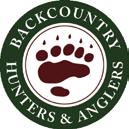
Dr. Christopher L. Jenkins (Georgia)
Katie Morrison (Alberta)
J.R. Young (California)
Michael Beagle (Oregon) President Emeritus
Chris Hennessey, Eastern Regional Manager and Chapter Coordinater (PA, Capital)
Jameson Hibbs, Chapter Coordinator (MI, IN, OH, KY, WV)
Trevor Hubbs, Armed Forces Initiative Coordinator
Bryan Jones, Chapter Coordinator (CO, WY)
Gloria Goñi Mcateer, Digital Media Coordinator
Kate Mayfield, Operations Coordinator
Kaden McArthur, Goverment Relations Manager
Josh Mills, Conservation Partnership Coordinator
Devin O’Dea, California Chapter Coordinator
Brittany Parker, Habitat Stewardship Coordinator
Thomas Plank, Communications Coordinator
Kylie Schumacher, Chapter Coordinator (MT, ND,SD)
Zack Williams, Backcountry Journal Editor
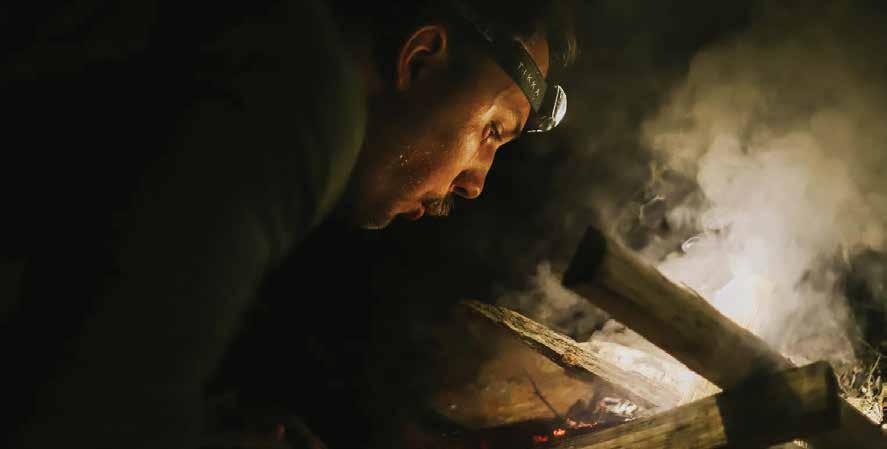
Interns: Lars Chinburg (Backcountry Journal), Sylvie Poore, Taigen Worthington
BHA HEADQUARTERS
P.O. Box 9257, Missoula, MT 59807 www.backcountryhunters.org admin@backcountryhunters.org
(406) 926-1908
Backcountry Journal is the quarterly membership publication of Backcountry Hunters & Anglers, a North American conservation nonprofit 501(c)(3) with chapters in 48 states and the District of Columbia, two Canadian provinces and one Canadian territory. Become part of the voice for our wild public lands, waters and wildlife. Join us at backcountryhunters.org
All rights reserved. Content may not be reproduced in any manner without the consent of the publisher.
Published Sept. 2023. Volume XVIII, Issue IV
JOIN THE CONVERSATION
“Earth provides enough to satisfy every man’s needs, but not every man’s greed”
-Mahatma Gandhi
THE VOICE FOR OUR WILD PUBLIC LANDS, WATERS AND WILDLIFE





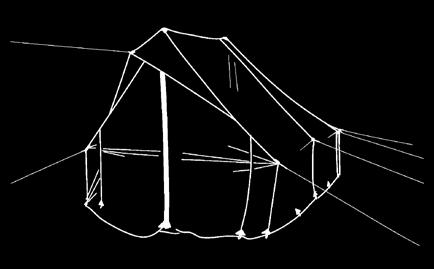






Rolling sagebrush hills, sheer cliffs of fossil-studded rock, jet-black lava flows and river-carved canyons home to mule deer, pronghorn, bighorn sheep and upland birds: the Owyhee Canyonlands sprawl across millions of acres of southeastern Oregon, southwestern Idaho and northern Nevada. Anglers can wade into the Owyhee River, a tributary of the Snake, home to native redband trout and a world-famous brown trout fishery. Hunters can traipse across seemingly endless high desert and canyon country, glassing for the perfect muley. Backpackers and rafters can spend days or weeks exploring labyrinths of canyons, ephemeral streams and volcanic craters, or simply stargaze beneath some of the darkest night skies left in the United States.
For years, the Owyhee stood as one of the most remote and undeveloped places remaining in the American West. More recently, however, unregulated recreation, unsustainable grazing practices, wildfires and development pressure from mining, oil and gas interests threatened the area’s important and irreplaceable ecosystems.
To combat this, a diverse coalition of stakeholders joined forces to craft legislation that would protect the area for public access and recreation, healthy habitat management and sustainable ranching and resource conservation. Among others, the group included members from local ranching organizations, the Burns Paiute Tribe, and the Owyhee Sportsmen Coalition – an organization including BHA. Working with Oregon Sen. Ron Wyden, the broad stakeholder group developed a bill, the earliest versions of which were proposed in 2019.
In June of 2023, Sen. Wyden reintroduced the bill, which would permanently protect more than 1 million acres of the Owyhee Canyonlands. Known as the Malheur Community Empowerment for the Owyhee Act, it is designed to protect important ecosystems and wildlife, preserve grazing rights and further economic development in the area. In its current iteration, the bill is a robust, widely supported piece of legislation, which has the potential to be a landmark

success for public access, conservation and community empowerment in Oregon.
The bill, which in July was considered in a hearing by the Senate Energy and Natural Resources Committee, includes two major components that BHA members and sportsmen and women in general should be excited about supporting. First, it designates about 1.1 million acres of Bureau of Land Management land as wilderness, in addition to placing almost 15 miles of the Owyhee River under Wild and Scenic River management. To facilitate ease of public access and sustainable grazing in the area, however, the million-plus acres of wilderness will be allocated across almost 30 individual areas. These proposed wilderness areas range in size from 2,911 acres (the Upper Leslie Gulch Wilderness) to over 220,000 acres (the Mary Gautreaux Owyhee River Canyon Wilderness).
While protecting over 1 million acres of habitat, the proposed legislation would maintain the ability to upgrade existing roads and establish new roads for scenic tourism and both sportsmen and rancher access. As BHA Oregon Chapter Coordinator Chris Hager put it, “This is a bill that we’re really happy with. It allows us to maintain the opportunity we have already as outdoor recreationists in the area, while creating long-lasting protections that will provide those same opportunities for future generations.”
A second major component of the proposed bill is the establishment of the Malheur Community Empowerment for the Owyhee Group (the Malheur C.E.O. Group). The C.E.O. Group will be made up of representatives from a wide-ranging set of key interest areas, including ranching, recreation and tourism, environmental protection, hunting and fishing, local Tribes and federal, state and local government agencies. According to Kaden McArthur, BHA’s government relations manager, the C.E.O. Group is a critical component of the bill because the group is “set up to make adaptive decisions for the ongoing management of the area with buy-in from different local constituencies and officials. For example, the group will have the ability to receive federal funding and then vote on how to allocate that funding to promote conservation and other import-
ant elements of the bill.”

As per the language of the bill, decisions affecting the proposed wilderness areas require unanimous support from all representatives of the C.E.O. Group with voting rights. Voting members include three representatives from livestock grazing interest groups, one member from the district irrigation group, four members who represent the interests of the hunting/fishing, recreation/tourism and environmental communities and two representatives from local Paiute Indian Tribes. There will also be eight non-voting members from federal, state and local government agencies. This ensures that all members of relevant interest groups will have a say in the ongoing management of the Owyhee, therefore maintaining access and opportunity for anyone with the gear and gumption to take on the steep trails and remote waterways of the region.
What’s next? So far, the bill has been introduced to the Senate with general support. To become law, however, it will need to pass through both the Senate and the House of Representatives before landing on the president’s desk for signing. Already, BHA members have shown incredible resolve in the early days of this bill’s creation. Chris Hager says that over 1500 members of BHA’s Oregon chapter have written directly to Sen. Wyden, expressing their support for the bill. According to him, it’s this kind of grassroots support that can really move the needle when it comes to public lands legislation, and the bill will need more of it soon if it hopes to pass both the Senate and the House.
According to both Hager and McArthur, Rep. Cliff Bentz will
moves forward. He has not yet expressed support for Sen. Wyden’s bill and has been skeptical of legislation creating wilderness areas in the past. But with support from such a diverse group of stakeholders, and with the allowances made for grazing and economic development, the bill should be considered a win for sportsmen and women, backcountry recreationists and ranchers alike.
Purple sagebrush stretching into the distance, cool streams tumbling through deep-cut canyons, rugged crags rising like fortresses painted red by the setting sun; these vast tracts of undeveloped public land shape the character of our nation and its people. The Malheur Community Empowerment for the Owyhee Act aims to protect this landscape for us and our future generations and deserves our unwavering support as stewards of public lands and waters.
Lars Chinburg is a BHA member, writer and avid outdoorsman. He lives in Missoula, Montana, and enjoys exploring the surrounding country with his partner Anna. You can find more of his writing at www.larschinburg.com.
Sharper than the day you bought them.
LEARN MORE AT: WORKSHARPTOOLS.COM/WSKTS2-LEARN-MORE
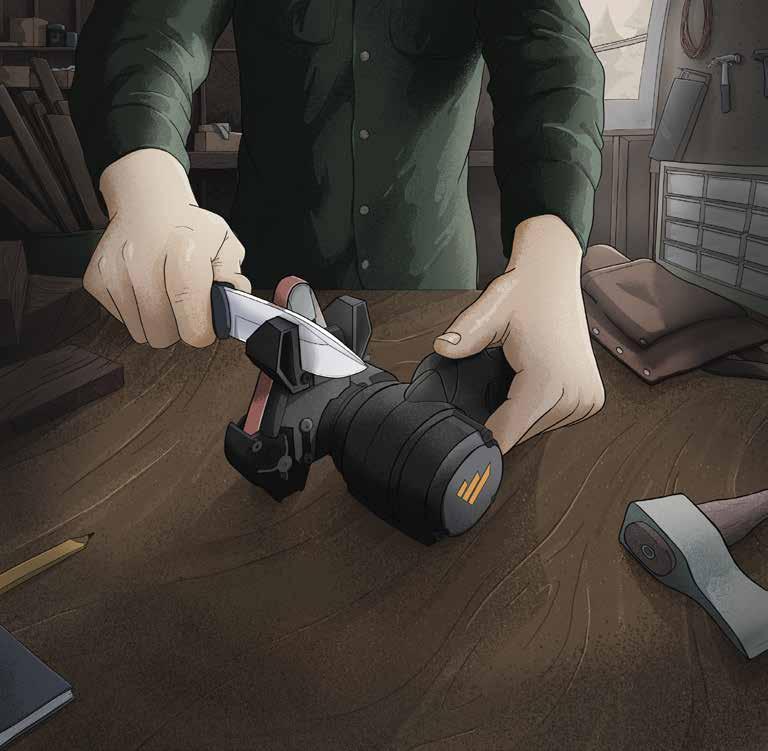








Fall 2023 | VOLUME XVIII, ISSUE IV
45 ARCHER’S PARADOX by Jake Forrest Lunsford
51 BUSHYTAILS & BOOKS by Noah Davis
55 RITES OF PASSAGE by Jeff Lauze
61 HUNTING THROUGH THE TRIUNE BRAIN by Durrell Smith
65 HUMOR
The BHA Bathroom Finder by Wendi Rank
68 SHORTS
100 Fish Days by Dalton Wayne
The Search for Public Land Ducks by Shawn Swearingen

74 OPINION Habitat’s Both Public and Private by Margie Crisp
79 BEYOND FAIR CHASE
When Your Goals Conflict and Your Ethics Suffer by Harley McAllister
80 FIELD TO TABLE Venison with Chestnut Purée & Port Sauce by Jenny Nguyen-Wheatley
83 END OF THE LINE
In June, Rhode Island Gov. Dan McKee signed H5174A and S417A, completing the legislative process for the pair to become state law. The governor’s signature came less than two weeks after the Rhode Island House of Representatives and Senate passed the bills in concurrence before concluding the 2023 legislative session.
As enacted, H5174A and S417A include several provisions that will improve shoreline access in the Ocean State. Specifically, the new law:
• establishes a workable public-access boundary
• limits landowner liability
• includes educational resources
We extend our gratitude to bill sponsors, Rep. Terri Cortvriend and Sen. Mark McKenney. Both legislators were members of the 2021 Legislative Study Commission on shoreline access, chaired by Rep. Cortvriend, and have championed efforts in their respective chambers since then. Additionally, we thank House Speaker K. Joseph Shekarchi and Senate President Dominick Ruggerio. Following the introduction of differing bills early in the 2023 legislative session Speaker Shekarchi and President Ruggerio facilitated negotiations toward the unified bills that passed in concurrence. Finally, we thank Gov. McKee for signing the bills into law.
The shoreline access effort was supported by the dedication and efforts of hundreds of organizations and individuals over the last several years. While there are simply too many to list, we’d like to specifically recognize and thank our colleagues in advocacy at Save the Bay –Narragansett Bay, who have been close partners throughout the development of H5174A and S417A. From copublishing op-eds on shoreline access to being recognized on the House and Senate floors following successful votes, Save the Bay and BHA have led the organizational charge to secure access to Rhode Island’s shoreline. (Rhode Island’s shorline access issue was featured in the fall 2022 issue of Backcountry Journal.)
(letter to the editor)
Your fence removal article (summer 2023 issue) struck a chord. In the early 1990s I was in charge of the Hart Mountain National Antelope refuge (275,000 acres) in Oregon, and the Sheldon National Wildlife Refuge (575,000 acres) nearby in Nevada for the U.S. Fish and Wildlife Service. Both refuges had massive grazing programs. Data clearly showed grazing was damaging habitat in these areas. We decided to remove grazing. On Sheldon, the permits were bought out. On Hart Mountain, a long, bitter public process ended the grazing.
I transferred shortly after that for personal safety reasons. My successors were left with nearly 250 miles of interior fencing on the two refuges. Volunteers stepped in to help, removing ALL of the hundreds of miles of fence. Seeing big piles of steel posts and rolled-up wire in the refuges’ bone yards brought me to tears ... tears of joy. Now, my heart soars like a hawk when I visit these refuges and see NO fences.
When I retired to Cody, Wyoming, in 2007, our Back Country Horsemen chapter teamed up with the Wyoming Wilderness Association to remove more than three miles of unneeded fence in the remote Trout Peak Roadless Area of the Shoshone National Forest. The BCH packed everybody in and out and removed the high-elevation fence in elk and wild sheep habitat. Lots of angst. Our BCH members were very suspicious of WWA members (granola crunchers, waffle stompers, liberals, etc.) After working together for three days, all of that disappeared and has not returned.
I am so pleased to see BHA focusing on fence removal in Colorado. Not only do these projects remove barriers to wildlife; these projects, I am convinced, remove barriers among wildlife, hunters and anglers and wilderness advocates. There is nothing like tearing down an old fence that makes people forget petty differences and understand what we all have in common. I would urge your state coordinators to focus on fence removal and to invite disparate groups to join together in these projects. The sum benefit of these efforts may be larger than just the fence removal.

Another great issue of Backcountry Journal. Keep up your outstanding work!
-Barry Reiswig, BHA Life MemberEpisode 161: Texas hunter and fisherman Jesse Griffiths is the author of Afield: A Chef’s Guide to Preparing and Cooking Wild Game and Fish and The Hog Book. Jesse is co-owner of the Austin, Texas, New School of Traditional Cookery and the restaurant Dai Due, whose name is drawn from the Italian proverb, Dai due regni di natura, piglia il cibo con misura: “From the two kingdoms of nature, choose food with care.”

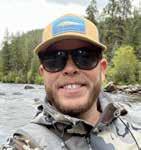
Join us for a conversation with one of the most visionary chefs in North America, talking hogs, turkeys, panfish, hunting and fishing and foraging for food, and a life defined by the earth and her seasons. That and more on BHA’s Podcast & Blast with host Hal Herring wherever you get your podcasts.
Born and raised in Colorado with a love for the outdoors, Bryan developed a natural inclination for hunting and fly-fishing. After high school Bryan joined the United States Marine Corps. After serving 10 years, Bryan left the service and completed his bachelor’s degree in Fish and Wildlife Management. Before joining BHA, Bryan was working as the natural resource and agriculture specialist and operations supervisor for Arapahoe County Open Spaces in the front range of Colorado. Bryan currently resides in Castle Rock, Colorado, with his fiancée Christie and their dogs, Norman and Lilu.
Born and raised in New York, Tiffany embraced hunting as a natural extension of her passion for conservation and wildlife management. Her love for archery hunting and the outdoors led her to discover a welcoming community within the outdoors industry. Supporting boots-on-the-ground initiatives dedicated to preserving and managing our lands, waters and wildlife led her to BHA, where she’s excited to make meaningful contributions toward safeguarding our natural legacy for future generations.
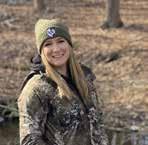
BHA members are still buzzing after BHA’s annual Muster in the Marsh event hosted in late July by the Ohio chapter. Hundreds of folks gathered in northeast Ohio at the newly founded Covered Bridge Outfitters in Conneaut. The event hosted passionate attendees from all over, including chapter leaders and members from West Virginia, Pennsylvania, Kentucky, Indiana, North Carolina, Massachusetts, Virginia and Tennessee. With a wild mix of competitions, spicy auctions, educational and interactive workshops, live music, wonderful brews and feasting, of course, money was raised for conservation causes and lifelong connections were forged.


Muster’s education and storytelling components cover a diverse array of outdoor pursuits and experiences, and we had some amazing presentations this year! The educational sessions on BHA events and policy discussions were well attended. We were in full policy swing with some solid representation from North American Board Member and MeatEater star Ryan Callaghan, BHA Government Relations Manager Kaden McArthur, Ohio chapter leaders Tony Ruffing and Dustin Lindley and Indiana Chapter Policy Chair Scott Salmon.
Events like these are essential in creating a meeting point where constituents from a vast array of policy standpoints bring distinctive perspectives and diverse opinions to the table. It’s seamlessly connected with BHA’s mission to set aside differences in philosophy or politics and say, “It’s time to shake hands. It’s time to get something done. The continuation of the very things we love – hunting, fishing, wild places, wildlife – depends upon our ability to move forward.”
After 10 years of dedicated service building an organization that has become North America’s leading voice for hunters and anglers and public lands and waters, BHA President and CEO Land Tawney announced his departure from BHA, effective the end of July.
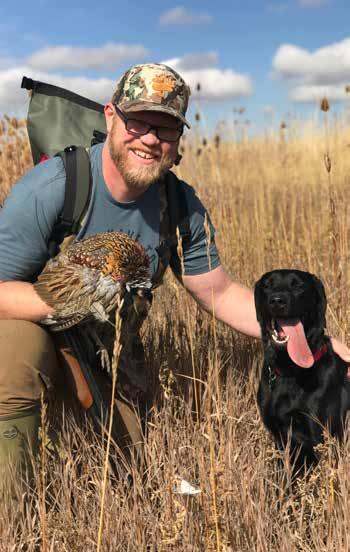

Over the course of Land’s tenure, BHA vaulted from a small, volunteer-based, Western-centric organization with less than a thousand members to an influential powerhouse with chapters in 48 states, Washington, D.C., two Canadian provinces and one Canadian territory. With an engaged community of more than half a million members, supporters and partners and 30-plus staff, BHA is impacting policy from a local to federal level, playing an increasing role in the stewardship of the continent’s public lands and waters, winning fights for conservation and access, and creating a “big tent” gathering point for outdoorsmen and women of all stripes.
Arguably, BHA would have remained a supporting player were it not for Land. He’s skilled at building a team, and he is always quick to give credit where it’s due. But Land was the tip of the spear.
“A lot of people think their voice doesn’t count and feel disenfranchised from decisions affecting our public lands, waters and wildlife,” he noted. “Together, the dedicated volunteers, members and staff at BHA have turned that notion on its head.”
Under Tawney’s leadership, BHA established its Armed Forces Initiative, Collegiate Club and Hunting for Sustainability programs. BHA maintains a membership that is young – 63% of BHA members are 45 and younger – and is politically diverse, split almost equally among Republicans, Democrats and Independents.
“The people, the people, the people!” emphasized Tawney. “I’m in awe of the time, talent and treasure individual volunteers generously give to BHA. We are warriors in the conservation arena, and I’d bet on our kick-ass staff each and every time. I’m proud of what we have all accomplished, together.”
Land says he can’t wait to see what the next chapter will bring. Neither can we.
Go, fight, win!
BHA State Policy and Stewardship Director Tim Brass was hired as BHA’s third full-time employee during 2012 and has been on the front lines of countless conservation battles both in Colorado and across North America ever since. He was initially hired as Southern Rockies Coordinator and was BHA’s longest tenured staff member.
Tim started as the Colorado Department of Natural Resources Assistant Director of Parks, Wildlife and Lands in late July. Congratulations Tim!


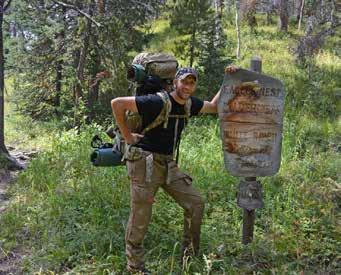
“I am beyond lucky to have had the opportunity to work with you all over the years and hope to get to work more with you all in this new role!” Tim said. “Thanks for all that each of you do on behalf of our public lands, waters and wildlife!” But Tim may have best summed up his 10-plus years on BHA’s staff as, “A wild and awesome ride!”
“Like drinking from a firehouse for 10-plus years!” Colorado chapter co-chair David Lien added. “Thank you, Tim, for your decade-plus of dedication, selflessness, guidance and wise counsel to both Colorado BHA leaders and chapters/clubs across North America. We hate to see you go, but your excellent conservation work will continue with/via the Colorado DNR, and we look forward to our collaborations going forward. Wildlands and wildlife need many more like you!"
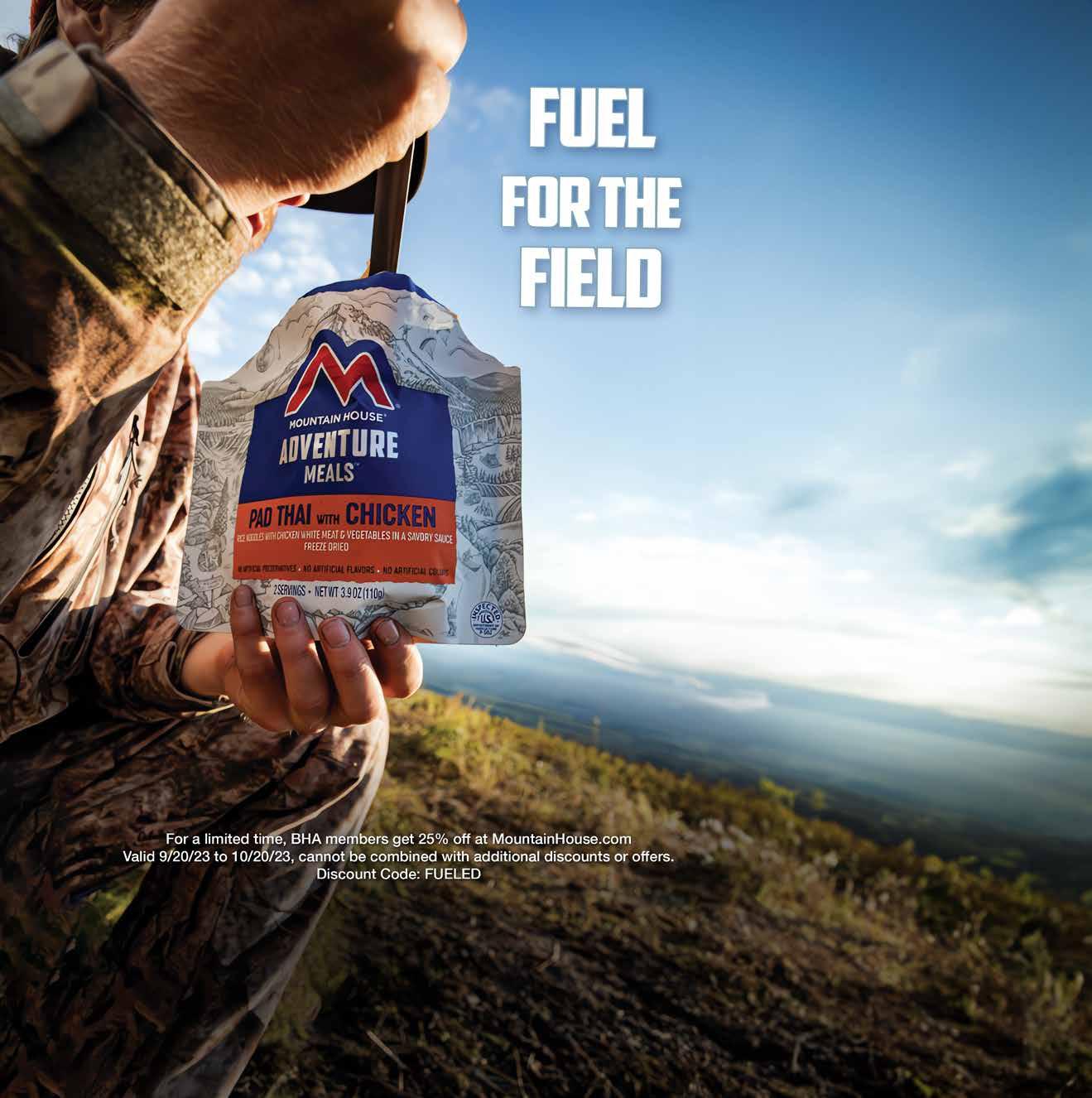
SCORE OVER $35,000 WORTH OF JAW-DROPPING PRIZES
G&H SPECIAL EDITION HOG ISLAND SKIFF & TRAILER FROM ON THE WATER MARINE
30 HP TOHATSU OUTBOARD MOTOR BOAT BLIND SYSTEM FROM POP-UP BLINDS

2 WEATHERBY 18i BOTTOMLAND 12 GAUGE SHOTGUNS
2 SETS OF GRUNDENS GORE-TEX WADERS, RAIN JACKETS & BOOTS
2 DOZEN DUCK DECOYS FROM G&H DECOYS







1 SET OF OARS FROM SAWYER

SPORTDOG DOG COLLAR
ANCHOR FROM TORNADO ANCHORS JETBOIL STOVE SYSTEM
FROM AWESOME COMPANIES LIKE ENTER NOW AT BACKCOUNTRYHUNTERS.ORG/23_FALL_SWEEPS


DAILY DRAWINGS START 9/18 - LAST DAY TO ENTER 10/17








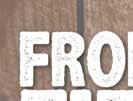
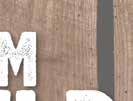


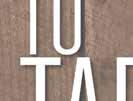

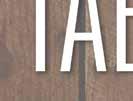















I joined BHA because as a lifelong hunter and fisherman and a conservationist with over 28 years in the field, I liked the science-focused, data driven approach to policy and conservation issues and feel the organization best reflects my values and interests as a hunter and fisherman. Equally important, most of the people I have met through BHA are moderate, practical, genuine sportsmen and women who pursue an active outdoors lifestyle similar to mine. For me, BHA has been about community, alignment on management and conservation issues, a shared interest in putting food on the table – and doing it in an honest, hardworking and genuine manner. That many of these things come together at a pint night and fun work projects is also a big plus.

YOU WERE RECENTLY NAMED EXECUTIVE DIRECTOR OF THE ADIRONDACK COUNCIL (CONGRATS BY THE WAY), WORKING TO CONSERVE ADIRONDACK PARK IN NEW YORK – WHICH I JUST READ IS THREE TIMES THE SIZE OF YELLOWSTONE! WHAT ARE A FEW OF YOUR BIGGEST CONSERVATION GOALS FOR THE AREA?
The Adirondack Park is an amazing place and a public lands mecca that is the size of Vermont with large unfragmented forests, which are as wild and remote as any wilderness area I have worked in the lower 48. The park is made up of almost equal parts private and public lands, which is unlike any other state or national park in the country. For almost 50 years, the Adirondack Council has focused on protecting the ecological integrity and wild character of the park but also finding ways to support working landscapes (timber and agriculture) and fostering vibrant communities in our rural hamlets. This is not an easy balance to strike in the Adirondacks.
Right now, we are focused on working with various state agencies to improve the overall management of the public lands and create a visitor use management framework that addresses the high levels of outdoor recreation that happen in portions of the park. We also are advocating on behalf of those agencies to make sure they have the staff and resources to be successful. The Adirondack Park is one of the few constitutionally protected public lands in the world, and we are working hard with nonprofit stakeholders, community leaders, local businesses and state agencies to make sure that this national treasure can thrive as we navigate climate change, invasive species, increased development pressure and a host of other significant challenges.
THE ADIRONDACKS ARE OBVIOUSLY
There is a quiet country road that I take on my way home from work that winds along a mountain ridge and offers fleeting views of the High Peaks through the trees. After a long day of travel and meetings, that drive helps to reset my day and remind me just how much I love these rugged mountains, the smell of pine and balsam, the people who work hard to make the most of what is offered here and the access to the type of outdoor activities and sporting life that makes living in such a remote location so worth it. It also helps that I can chase heritage-strain brook trout, backcountry bucks and high-mountain toms within a short drive from my house.
BHA has the potential to reset the conversation around access issues, game management planning, sporting related legislation and other high impact and often controversial topics that affect wild lands and large public open spaces on the East Coast. We have seen BHA’s impact on issues like that out West. The Adirondack and Catskill parks are test cases for how that Western approach could be used to effect positive change for protected lands within driving distance of major cities like New York City, Boston and Montreal. We need to become more of a legislative presence in Albany, develop and foster positive relationships with the executive leadership of our state management agencies and continue to build our state membership. This would give us a stronger voice on important issues that affect millions of acres of public lands in the Adirondacks, Catskills and across New York State.
BHA is bringing a modern approach to traditional sporting issues that offers tremendous potential for collaborations with local/place-based organizations. BHA’s emphasis on fostering community, mentoring, building relationships with non-traditional user groups, etc. is a powerful way to build support and engage new voices in the hunting/fishing space. Tapping into local knowledge and on-the-ground expertise that groups like the Adirondack Council bring to regionally relevant issues could bring much needed energy, resources and excitement to complicated and nuanced issues. Finding and cultivating these partnerships should be a priority at all levels of BHA. It provides local credibility, addresses real needs, empowers stakeholders and most of all creates the momentum necessary to achieve victories on the issues most important to BHA members. Not an easy task to build these relationships, but BHA has a unique advocacy voice that groups value and want to engage with.




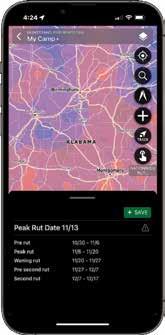

BHA’s Backcountry Bounty is a celebration not of antler size but of BHA’s values: wild places, hard work, fair chase and wild-harvested food. Send your submissions to williams@backcountryhunters.org or share your photos with us by using #backcountryhuntersandanglers on social media! Emailed bounty submissions may also appear on social media.
Hunter: Anne Jolliff, BHA Montana chapter board
Species: elk | State: Montana | Method: rifle Distance
Hunter: Zach Nordstrom, BHA member | Species: mule deer State: Idaho | Method: rifle | Distance from nearest road: four miles

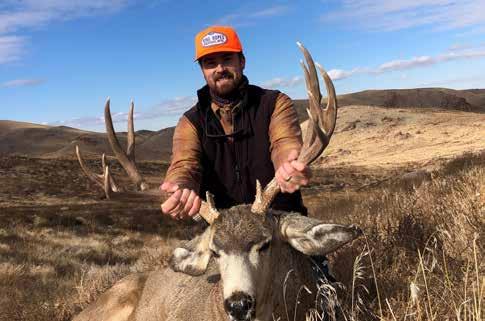

Transportation: horseback
Steward: Matt Kearns, BHA member | Species: trash | State: West Virginia | Method: hand-picked | Distance from nearest road: roadside Transportation: foot
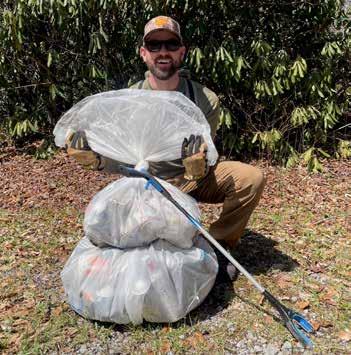
Hunter: Parker Capwell, BHA life member
Species: elk | State: Wyoming | Method: rifle
Distance from nearest road:18 miles
Transportation: horseback
Angler: Preston Mass
Species: smallmouth bass

Province: Ontario Method: spin | Distance from nearest road: 19 miles
Transportation: float plane, canoe, foot
Hunter: Jeff Swett, BHA member | Species: ruffed grouse | State: Maine | Method: shotgun | Distance from nearest road: three miles

Transportation: mountain bike, foot
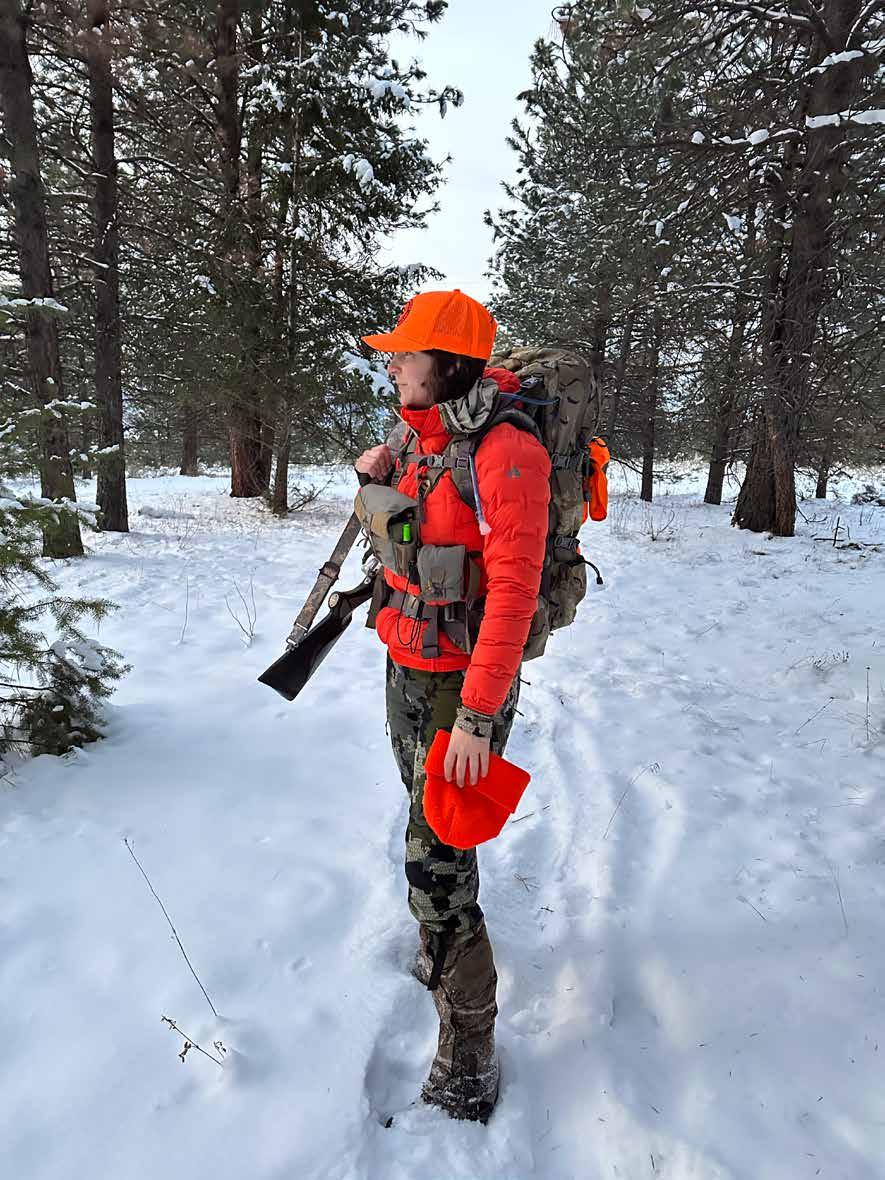

Montana’s hunter education courses provide an overview of hunting-related information and skills, including Montana hunting laws, firearm safety, game ID, and fair chase ethics. Anyone born after Jan. 1, 1985, must complete hunter education in order to obtain a Montana hunting license.
The free courses are offered across Montana and are led by volunteer instructors who are experienced, knowledgeable and committed to passing on their skills to the next generation of hunters. Charlie attended two days of classroom instruction, participated in a field course and passed a final exam in order to become certified as an apprentice hunter.
Charlie is 10. Both of his parents hunt, along with many of his uncles, cousins and friends. He’s excited to head afield this fall. He talked to BHA staff about taking hunter education before, during and after it.
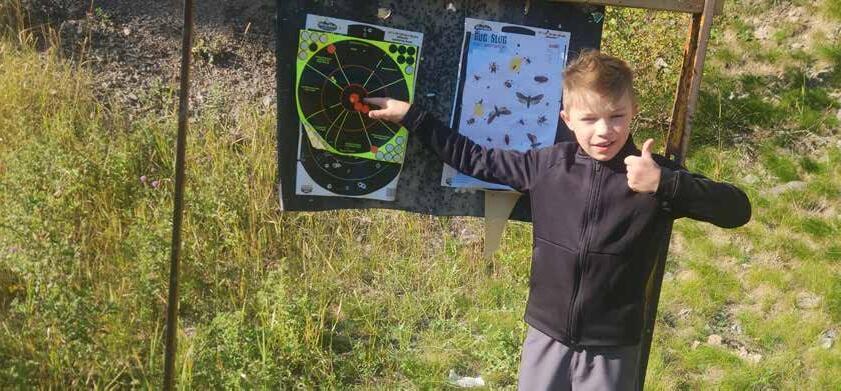
This week you’re taking hunter education. How do you feel?
I’m definitely excited, because I can’t wait to go hunting. Every year I help my dad hunt, but this year, if I pass the course, I’ll be able to hunt myself instead of just looking for deer.
I’m having a hard time relaxing tonight, because I’m so hyped to go to hunter education in the morning. Me and Dad are going to finish reading the study book tomorrow before we leave.
Why is hunter education important?
It teaches you about how to hunt safely and even about survival. Gun safety is important…otherwise someone could get hurt, or worse.
After Day 1:
How did the first day go?
The class was at the FWP [Montana Fish, Wildlife and Parks] offices. A FWP employee told us about a bunch of important hunting laws. We went outside and learned the basic shooting stances. I’d spent a lot of time reading the book, so most of it was familiar to me already.
I made three friends. The instructors were good. There were two pretty nice guys and one mean old man. During lunch break, my dad came to get me, and we went out to lunch at KFC!
What was really lame is that the chairs were really uncomfortable, and I had to sit still for two hours at a time. And that’s really hard for me to do!
I’m looking forward to tomorrow. If I pass the test, I get a free knife with removable blades, and my dad will take me to the shooting range!
After Day 2:
How was the second day?
We started off the day with a quiz to get us ready for the big test. Then the instructors broke us up into groups, and we learned how to cross fences while carrying a firearm. Then we practiced shooting positions and gun holds. After that we learned about shooting…where to try to hit the deer.
Lastly, we took the test. I think the questions were a little easier for me because I’d practiced ahead of time. That was the written part of the test. After that, we did animal identification. Luckily everyone in my class was able to pass. Everyone received a nice pocketknife (with removable blades), a badge and a certificate.
I was really excited when I found out I passed, because this fall I get to hunt deer, in a few weeks I’m going to go turkey hunting with my dad, and tomorrow we’re going to go to the shooting range!
Any final words of advice?
I recommend that other kids take hunter education. It prevents accidents…and it’s fun!
Editor’s Note: Although it varies by state, province or territory, many hunters in the United States and Canada are required to pass a hunter education course to legally obtain a hunting license. Most agencies require hunter education for hunters born after a certain year, and many require additional education for archery hunters. Check with your local fish and game agency to learn about the specific requirements for your area and sign up for a hunter education course. Hunter-ed (www.hunter-ed.com) is a great resource that has information on individual regulations, study guides, and online steps toward certification.
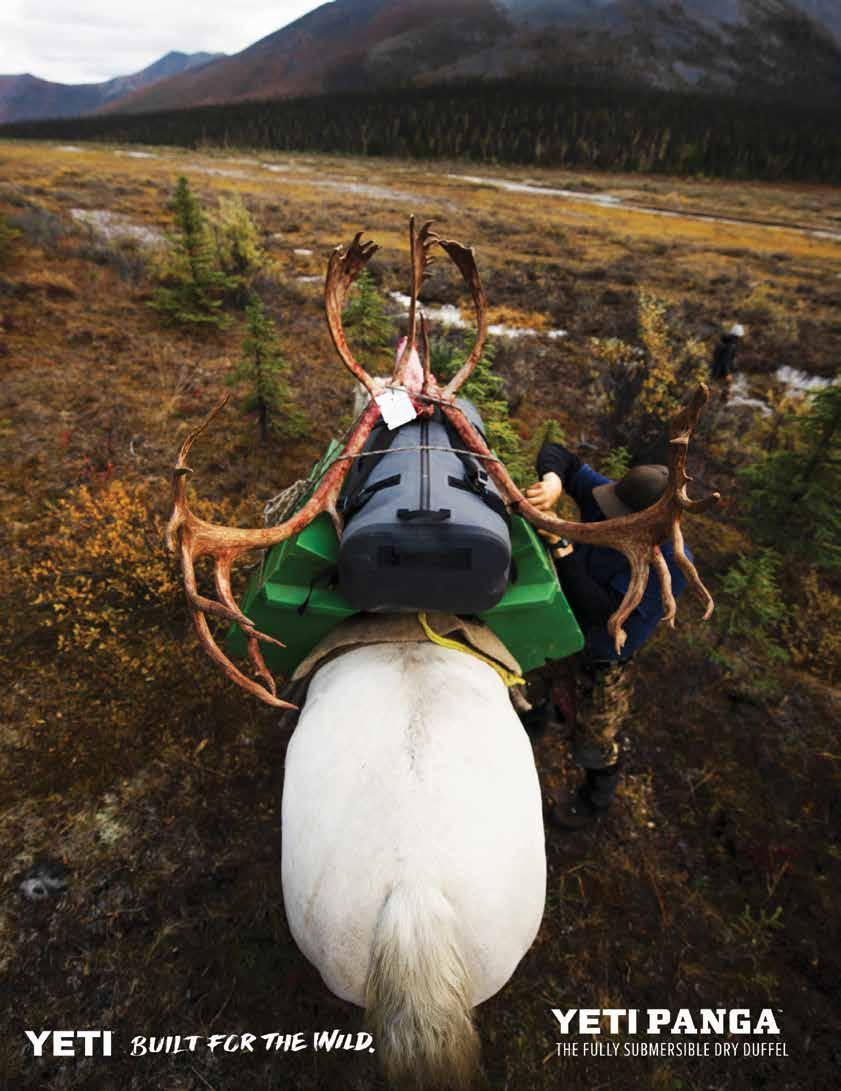
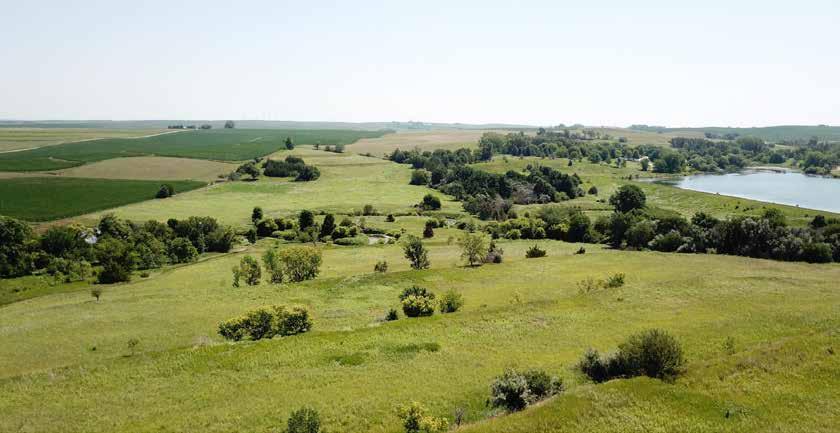 BY PHIL HAYES
BY PHIL HAYES
Iowa ranks among the lowest in the country for public lands and access – less than 2% of the landmass is publicly accessible, and even less is open to hunting and fishing, The Iowa chapter of BHA recognized the need for more and, over the last year, set a plan into motion to support land acquisitions whenever possible throughout the state. 2023 will close with new opportunities for public recreation and 478 newly added acres permanently available for all Iowans to hunt and fish.
The first of these acquisitions was in Ida County in western Iowa, spearheaded by Zach Hall, director of Ida County Conservation. The Rich Smith Wildlife Habitat Area is a 103-acre addition to public upland and bowhunting ground that will also reduce erosion in the watershed of 62-acre Crawford Creek Lake, helping to preserve this public fishing opportunity in Ida County. This was a comprehensive effort by the Iowa chapter of BHA and local NGO partners in which the chapter donated directly to the purchase and created a fundraising page to generate donations from BHA members and corporate partners in Iowa and nationwide. Funds raised locally were used to match an Iowa Habitat Stamp Grant application for nearly $350,000. A huge thanks goes out to all of our BHA members and supporters who helped promote and fundraise for this acquisition. This project helped put the Iowa chapter on the map, and inquiries for our assistance started to roll in.
After the Ida County aquisition, the chapter also supported Lyon County Conservation Director Justin Smith in the acquisition of the Nachtigal property, which adds 40 acres in northwest Iowa for public fishing and hunting. Funds from BHA memberships, dollars donated by BHA corporate partner Wilderness Lite and a letter of support from BHA for the Iowa Habitat Stamp Grant helped open this ground for public access. A 15-acre fishing pond and a halfmile section of the Little Rock River, including several oxbows, are key features that make these 40 acres a great addition to our public lands. An adjoining 130 acres also will be purchased by the U.S. Fish and Wildlife Service, adding even more land for public hunting in Iowa.
The most recent chapter contribution to Iowa’s public lands, thanks to Chickasaw County Conservation Director Chad Humpal, was the successful acquisition of the 220th Street property. Chickasaw County Conservation has purchased 205 acres of spectacular upland hunting ground in northeast Iowa, which is expected to be open to the public for the start of the 2023 pheasant season.
All Iowans purchasing a Habitat Stamp have also supported these additional opportunities for public hunting and fishing. Each acquisition was generously funded by Habitat Stamp grants, which most notably also assure permanent access to all these acres for public hunting and fishing.
In total, efforts by BHA’s Iowa chapter helped add 478 acres for public hunting and fishing during 2022-2023. With the continuing help of our Iowa members, BHA continues to lend support to adding additional public land and access throughout the state.
Meanwhile, as the Iowa chapter of BHA was actively championing three projects to add to public lands and waters in Iowa, political powers were at work to prevent us from doing just that.
This past March, SF 516, a bill calling for only the maintenance of current public lands, blocking further public land acquisitions, passed the Iowa Senate and headed to the House for consideration. Proponents of public land, including the Iowa chapter, quickly rallied in opposition of SF 516, engaging the members of one House committee after another while supporters of the anti-public land bill sought any imaginable route to a committee approval that would lead to a vote by the entire House. If the bill became law, it would create an insurmountable barrier to future purchases of land accessible for public recreation in Iowa. Each member of the House committees considering SF516 heard our rationale, and heard it repeatedly.
They listened, and they responded to BHA and others by recognizing the importance and value that more public lands bring to Iowa, both economically and for our quality of life. SF 516 was stopped before it made it through committee. It was a gratifying victory for the chapter and like-minded Iowa public land advocates in 2023, but it is certainly a battle that will continue both to motivate our Iowa members and require our action in the years ahead.
It’s just the beginning. We have learned we cannot rest. We must monitor legislative activity each session. We must be ever vigilant to ensure laws and public policy do not block and instead facilitate acquisition of land that is open to the public for hunting and fishing. And we must doggedly rally Iowa hunters and anglers to continue their support for purchases of additional land and access.
Phil Hayes is an enthusiastic backcountry float tube fisher and owner of BHA Corporate Partner and Gold Business Member Wilderness Lite, LLC. He is a founding board member of the Iowa BHA chapter, served 4 years as chapter secretary and continues on the board, focused primarily on seeking partnerships for the Iowa chapter’s efforts to unlock more land and water for public fishing, hunting, trapping and foraging.
Ouachita, a French spelling of the Caddo name Washita, means “good hunting grounds.” With an abundance of black bears, whitetails, wild turkeys and all other manner of critters and flora, the Ouachita Mountains of Oklahoma and Arkansas live up to that name. Recently, BHA’s Arkansas chapter made a huge impact on access in the region with the completion of BHA’s first-ever land purchase.
The big gain in access is the result of the chapter’s closing on a small land acquisition that will improve public access to the Cedar Creek Wildlife Management Area. Upon buying the 1-acre parcel, which will provide a much-needed point of access and parking area for hunters, our chapter immediately donated it to the Arkansas Game and Fish Commission.
Currently the 103-acre Cedar Creek WMA provides walk-in access for hunting small game, turkey and deer, and a building on the site serves as a gathering area for research projects and conservation partners. Hunters who also wish to access the adjacent 150,000-acre Muddy Creek Wildlife Management Area may now legally do so by using the new parking area at Cedar Creek.
In 2022, the Arkansas chapter leaders decided to prioritize opening access to landlocked public lands. Board members Brad Green and Scott Knight began building a cooperative partnership with AGFC and onX Hunt. By December, the partnership had found its first access opportunity – the one-acre parcel available for purchase. Although the property owner had graciously allowed the public access through his property for several years, if another private owner bought the property, access could have evaporated in an instant.
“I’ve seen this property change hands a couple of times over the years,” says AGFC Region 5 wildlife biologist Jason Mitchell. “Once I learned about this project with BHA, onX and our agency, I knew we had a chance to secure it for our sportsmen and women in the area.”
Although the acreage is small, the opportunity to provide permanent legal access to such a large portion of existing public land was too great to ignore. The small scale of the purchase also had another benefit: $4,000 was an attainable price for BHA’s first ever land purchase – and a good test case for this new access partnership. It helped BHA learn how to do this type of access work and serves as a model for other chapters to follow.
Thanks to Arkansas BHA’s previous fundraising and public access work – including preventing the sale of the public Pine Tree Research Station to a private owner – the chapter had both the funds and reputation to make an offer to the seller. We always intended to donate it to the AGFC – not own land ourselves – and we did this with complete transparency. In fact, the landowner’s primary request was that the state agency owned the 1-acre parcel. So the chapter arranged a simultaneous closing – where the title could be
delivered to BHA and then to AGFC in the same filing. Thanks to the attentiveness and support of BHA staff, the transaction was completed promptly.
Why, you might wonder, did BHA get involved in the first place if the landowner wanted the property to go to the state? There are two reasons: First, the landowner wanted the funds from the sale of their property, which prevented them from donating it outright. Second, the amount of red tape required for a state agency to purchase a property, no matter how small, would have meant years in limbo for the seller and possibly a missed opportunity to secure the property for access. The Arkansas chapter was able to facilitate that transfer and spend chapter funds on what they’re meant for –furthering our mission.
The acquired property will be added to the Cedar Creek WMA and will include a parking area with access to Arkansas State Highway 28. To cap off an incredible access win, Jim Taylor – the treasurer of the Arkansas Wildlife Federation, a BHA member and a great advisor and friend to the Arkansas chapter – personally donated funds for a sturdy metal gate that will assist AGFC in managing access to the new parking area.
“This represents not only the first BHA land acquisition and transfer in Arkansas; it is the first for the organization nationally,” AGFC Director Austin Booth said during a recent AGFC meeting. “This may not seem like a large piece of land, but it is a very big deal as it opens much more access to our hunters, and we hope it’s the first step in a long relationship of increasing opportunity for Arkansans.”
Although the Arkansas chapter only formed a few short years ago, the partnerships and friendships we’ve formed since then were essential to the successful completion of this access project. The chapter is elated by the success of this acquisition and is on the hunt for more parcels to add to public land throughout the Natural State.
BHA Arkansas Chapter Events Chair Ryan Pettigrew lives with his family in Prairie Grove where he works as an attorney in real estate development. He spends his free time teaching his young sons the skills he learned as a feral boy in the Arkansas backcountry.




• The Alaska chapter is completing the final planning steps on an upcoming Armed Forces Initiative Learn to Caribou Hunt event this August in the Alaska Range for 10 veterans.
• The chapter, in conjunction with the Armed Forces Initiative-Alaska, worked on a streambank restoration project on the Russian River, performing essential habitat improvement for the upcoming sockeye salmon run. More on the news page at backcountryhunters.org/alaska
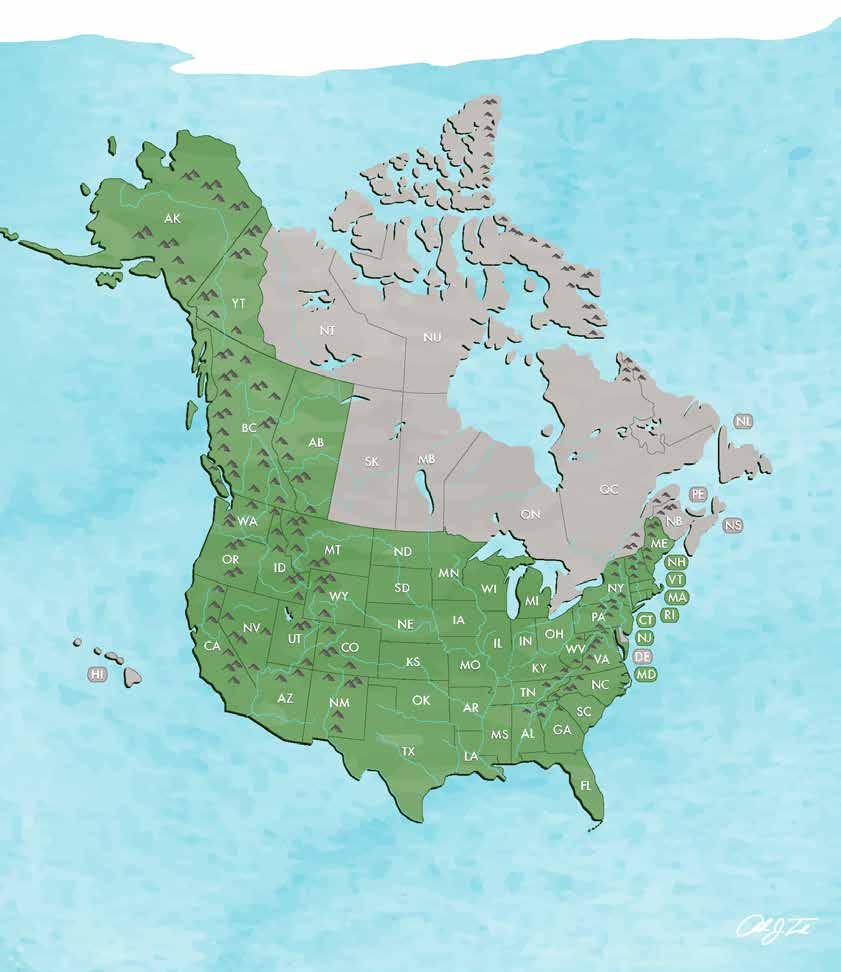
• The chapter continued its engagement with the provincial government and appointed trail system managers over concerns with implementation of the Trails Act and the expansion of motorized access on public lands.
• The chapter participated in the Alberta Native Trout Collaborative’s Angling Fair, in cooperation with Trout Unlimited Canada, discussing responsible practices for angling and recreation on public land.
• The chapter hosted a series of fishing and boating events to highlight our public waters, led by our new Public Waters Chair Rick Spicer.
• The chapter continued its summer series of Bows n’ Brews 3D archery community events.
• The chapter formed a special committee to explore future public access opportunities in Arkansas.
• Volunteers spent two days cleaning up Perrin Ranch. With the help of the Arizona Game and Fish Department’s Adopt-A-Ranch program, tires,
wire fencing, trash, old camper shells and even an abandoned boat were hauled away.
• The chapter hosted a sold out gourmet wild game dinner at Greenwood Brewing. Chef Vibber prepared three courses. including smoked Coues deer and javelina Bolognese, all paired with local beer.
• Our annual Family Squirrel Camp will be held Sept. 29 through Oct. 1.
• AFI completed an access project on the Deep River near Fort Liberty, North Carolina, creating a public access point to 12 miles of river for fishing, hunting and trapping that had been inaccessible prior to this project. The new access site will be named Captain Cooper Akin Memorial Dock after Captain Cooper Akin, a U.S. Army Green Beret and board member for Fort Liberty AFI, who passed due to a service-connected cancer in early June.
• The AFI work with the interagency task force around the Accelerating Veterans Recovery Outdoors Act is ongoing. Passed in 2020, it mandates the use of federal public land for veterans’ adjunct outdoor therapy. AFI is advising the task force representatives from Department of the Interior, Veteran’s Affairs, Department of Defense and various elected officials by providing data from the field, first-hand experience and recommendations moving forward. Legislation and policy changes are anticipated by Nov. 2024.
• In June the Armed Forces Initiative reached a significant milestone, having introduced 5,000 participants to the backcountry, hunting, angling and a mission of conservation.

• Regions have been hosting events, including guest-speaker pint nights, youth range days, group hikes, a fly-fishing course, orienteering and habitat improvement projects.
• The chapter conducted a province-wide hunter survey on B.C.’s Limited Entry Hunting system to support the LEH system review by a stakeholder group.
• The chapter is taking a lead role in developing the East Kootenay Regional Wildlife and Habitat Advisory Committee. The committee will create a template for regional committees as part of the Together for Wildlife strategy.
• BHA members shut down a petition to the fish and game commission attempting to close nearshore fishing in central California.
• BHA presented the U.S. Marine Corps squadron HMLAT 303 with a plaque and ram skull to recognize their commitment to wildlife during a critical drought year.
• The chapter celebrated the reintroduction of the PUBLIC Lands Act, legislation that would have a monumental impact on rivers, forests and habitat for a number of species in the state.
• The chapter sponsored a new hunter turkey hunt through Virginia DWR’s One Shot Event.
• The chapter engaged with BHA leaders and federal lawmakers concerning the Land and Water Conservation Fund, reenforcing commitments to keep allocated funds from being redirected.
• The chapter engaged with Sen. Kaine (D-VA) in supporting the Virginia Wilderness Additions Act.
• John Chandler was recognized as BHA Member of the Month for May. John was instrumental in organizing the chapter’s biggest and most successful stewardship event, Beers, Bands & Barbed Wire Strands.
• Alex Krebs was recognized as BHA Member of the Month for June 2023. Alex helped stop a proposed mountain bike trail system impacting vital big game/elk habitat.
• Collin Hildebrand was appointed the chapter’s northwest group assistant regional director.
• Army National Guard veteran Matt Lee was named Colorado Armed Forces Initiative liaison.
• U.S. Marine Corps veteran Bryan Jones is the new BHA Colorado and Wyoming chapter coordinator.
• In July the chapter hosted its third annual scouting workshop in Jupiter, where seasoned hunters led groups on a morning scout to help identify game sign and better understand Florida habitat.
• At an FWC stakeholder meeting, the chapter successfully lobbied for an additional 30 minutes of access following afternoon waterfowl hunts on all gated stormwater treatment areas.
• The chapter provided input and participated in a public access scoping meeting for Arthur R. Marshall National Wildlife Refuge.
• The chapter is closely monitoring the proposed NOAA rule to reduce the speeds of certain boats to 10 knots off the Georgia coast.
• The Georgia chapter is busy planning its first annual sporting clays shoot.
• The chapter hosted a Salmon River cleanup near Challis and a Public Land Pack-Out day near Sandpoint.
• Classroom sessions were completed for Learn to Hunt; 20-plus stu-
dents are anticipating their fall mentored hunts.
• The chapter welcomed Melissa Hendrickson as secretary, Joshua Zifzal as the Stewardship Committee chair, Ty Thompson as a Region 2 representative, and Zach Cuddy as a Region 3 representative.
• Armed Forces Initiative-Idaho, along with 3 Heart and Lion’s Head Outfitters, hosted a successful float and fish on the Kootenai River and offered a backcountry medicine class in Coeur d’Alene.
• The Illinois chapter has had a busy summer with pint nights, work days and meetings. We want to wish everyone a successful and safe fall season on whichever public lands and waters you are on.
• Work has started on the Lake Shelbyville Archery Park. The chapter is searching for sponsors to help support the first BHA-affiliated 3-D archery trail. Email us to see how you can help!
• The Indiana chapter had three leaders attend a Train the Trainer sawyers course hosted by the U.S. Forest Service. Attendees gained firsthand experience in bucking and proper chainsaw usage and received their Level B Bucker Certifications.
• The Indiana chapter will be hosting their 3rd Annual Chapter Rendezvous Sept. 9-10 at the White River Campground. This event has great participation, and folks always leave invigorated for conservation work.
• The chapter events committee is continually looking at new event ideas and locations. Stay tuned for more great opportunities!
• In June, the chapter hosted a Learn to Fly Fish event with Dan Frasier in northwest Iowa.
• The chapter contributed funds and solicited donations for three land acquisitions in late 2022-2023 in Ida, Lyon and Chickasaw counties. The increases in public land hunting and fishing access totalled 478 acres!
• The chapter held its state rendezvous at Yellow River State Forest in July, complete with camping, a fishing contest and seminars from the Iowa DNR, Trout Unlimited and Iowa Natural Heritage Foundation.
• On May 19, volunteers with the Kansas chapter partnered with KDWP to remove Eastern red cedars on 1,000 acres of greater prairie chicken habitat in north-central Kansas.
• On June 24, Kansas BHA volunteers worked with managers at Quivira National Wildlife Refuge to remove fencing.
• On July 29, the Kansas chapter assisted the Kansas Department of Wildlife and Parks in posting Walk-In-Hunting-Access signs on a large, newly enrolled property in south-central Kansas.
• On Aug. 19, the Kansas chapter attended Walton’s Brat-Fest in Wichita, where information regarding BHA was dispensed to attendees.
• We are pleased to announce state sponsor Fine Arms & Armor.
• We tabled at the Bluegrass Trout Unlimited Fly Fishing Film Tour in Lexington as a corporate sponsor in April.
• Our fourth distict director Ben Bishop led a tabling event at the first annual Kentucky Elk & Outdoor Fest in Bardstown, sponsored by KY Gun Co., with 8,000 people in attendance in May.
• Our eighth district director Samantha Lewis led the building of fish habitat structures in Buckhorn in cooperation with the U.S. Army Corps of Engineers and KDFWR in June.
• The chapter held a successful pint night to help educate and raise awareness of the possible Camp Grayling expansion, which would have limited access and opportunity for hunters and anglers on over 162,000 acres of public land.
• The chapter hosted an engaging pint night to increase knowledge and awareness of the Cornwall Dam issues.
• The chapter hosted our annual state rendezvous at the Looking Glass River Sportsman Club in Laingsburg from July 28-30. This event allows numerous people an opportunity to engage with like-minded conservationists and walk away feeling charged and ready to make a positive impact around our state. A huge thanks to all involved and those who attended this wonderful weekend!
• The Minnesota chapter participated in the first planning meeting as a partner member for the Minnesota Governor’s Deer Opener.
• The chapter enjoyed hosting its first Cocktails for Conservation trivia night with Minnesota Deer Hunters Association. This event was hosted at the brand new Obbink Distilling Company in St. Joseph.
• At the close of the state legislative session, chapter leaders totaled 12 in-person testimonies on behalf of BHA members in regard to multiple legislative topics. The chapter was also an active participant in the conference committee process.
• The Missouri chapter recently hosted a pint night in Kansas City.
• The chapter attended Dive Bomb Industries’ 3rd Annual Squadfest in St. Louis. We were able to raise a lot of money and talk to waterfowl hunters from all over the region about BHA’s mission.
• The chapter hosted Mark Kenyon on his Working for Wildlife tour near St. Louis for a public habitat improvement project and fundraiser afterwards.
• The chapter helped introduce, pass and see legislation signed into law that increases the fine 1,000% for illegally blocking public roads.
• The chapter cheered the reintroduction of the Blackfoot-Clearwater Stewardship Act and supported multiple proposed conservation easements; engaged in season-setting and FWP’s elk-management planning process; published op-eds in support of the BLM Public Lands Rule.
• The chapter hosted pint nights in Billings and Helena, pulled problematic fences in pronghorn country, and lined up a summer of stewardship projects yet to come!
• The chapter held its third annual backpacking clinic, with live demos of field dressing, quartering and deboning and pack dumps for various hunts.
• The chapter submitted comments on the Nevada Solar PEIS, the new BLM Public Lands Rule and the Greenlink Energy Development Plan.
• Summer pint nights were held with Nevada Wildlife Federation and Nevada Division of Wildlife.
• The chapter completed several apple-tree release projects on Vermont state lands, as well as an AFI Grouse Camp, with hunting on the nearby Green Mountain National Forest.
• New Hampshire members weighed in on the fish and game commission’s five-year strategic plan.
• In Rhode Island, shoreline access has been protected and restored in a big legislative win!
• On Aug. 26 the New Jersey chapter participated in the Public Lands Pack-Out presented by onX. The chapter board organized three separate pack-outs at wildlife management areas, including Whittingham WMA in the north, Colliers Mill WMA in central Jersey and Makepeace WMA in the south. Each pack-out was attended by BHA members from across the state, as well as officials from the NJ Fish and Game.
• The chapter and Kirtland AFI rebuilt two beaver dam analogs in the Lincoln National Forest, contributing to a long-term goal of native Rio Grande cutthroat trout reintroduction. The crew also removed hundreds of feet of hose that was left in a riparian bottom following a revegetation project.
• The New Mexico and Texas chapters were awarded the U.S. Forest Service’s 2023 Prairie Partner Award in recognition of our Kiowa and Rita Blanca national grasslands work, demonstration of resource stewardship, a willingness to provide funding and other resources to grassland projects and producing innovative practices and results.
• The chapter’s Hike to Hunt event at Ellicottville Brewing was a great time, including hiking, a fitness challenge and archery.
• The chapter collaborated with Hunters of Color, New York Nature Conservancy and NY DEC on an Introduction to Archery day. Over 70 new hunter-conservationists came out for this event where they learned archery, treestand safety and basic deer scouting skills.
• The chapter rendezvous will be at the Hungry Trout Resort in September on the banks of the Ausable River, surrounded by mountains and public land. Top speakers, seminars, great food, conservation and campfires are in the works!
• The chapter expanded its board to add a social media manager and East Grand Forks and Minot representatives.
• The chapter partnered with Roughriders Archers to host the 2023 Badlands Classic Archery Shoot, which took place 100% on public land at the Little Missouri National Grasslands.
• The Ohio chapter hosted the party of the summer, Muster in the Marsh, at Covered Bridge Outfitters in beautiful and fishy Conneaut, Ohio. The event featured entertainment including live music, crazy raffle prizes, games for the kids and even a turtle butchering demonstration. The Cleveland Field Kitchen made magic with ingredients from the marsh and woods for our Conservation Dinner, and we were joined by the always-engaging Ryan Callaghan and Kevin Murphy.
• It’s not all parties, however, and the Ohio chapter board continues to keep an eye on developments to public land hydraulic fracturing. We continue to push for greater transparency in the leasing process for fracking under our state parks. Of particular concern are some proposed well pads very near huntable public land and those uphill from important waterways. Read more on the Ohio chapter page of the BHA website.
• On June 17, volunteers with both the Oklahoma chapter and Quail Forever joined up to perform hack and squirt conservation efforts at Osage WMA, Rock Creek Unit. Thousands of trees were killed off in order to establish habitat back to a savanna-type landscape for quail, turkey and other species.
• On July 21-23, the Oklahoma chapter, along with members of the Arkansas chapter, hosted its Stateline Rendezvous at the Illinois River in northeast Oklahoma, which included a river float, fishing and conservation work.
• The chapter helped pass HB 3086, which reforms the ODFW commission to have members represented by the five river basins in the state, instead of by population.
• The third annual Cut and Cook event was completed, where 40-plus participants learned how to shuck oysters and filet/prepare salmon.
• The chapter held its inaugural Clam Jam, where participants of all ages gathered at Seaside to learn how to harvest razor clams along Oregon’s coastline.
• The chapter was awarded a Certificate of Recognition from the Pennsylvania Fish and Boat Commission for its work on the Adopt an Access program, where BHA members adopt boat access sites for regular cleanups. The chapter was the pilot group for the new program.
• Board Member Adam Eckley held the third annual Learn to Trout Fish program. Participants camped out and received hands on training on the fundamentals of fly fishing for trout.
• BHA members completed the chapter’s annual Pennsylvania Wilds Trail Challenge. This year the group covered 28 miles in the Hammersley Wild Area.
• The chapter joined local partners in three water cleanups this past summer: Missouri River at Yankton, Enemy Swim Lake and Missouri River at Pierre/Fort Pierre.
• The chapter rallied members to send over 30 letters in two days to oppose the Golden Crest Mining Project in the Black Hills.
• The chapter submitted testimony to the BLM and USFS to support a 20-year mining withdrawal within the Pactola-Rapid Creek watershed, which provides access and clean water to the Rapid City area and nearby Ellsworth Air Base.
• The chapter will be hosting a family fishing get-together at Mississippi’s Percy Quinn State Park on Sept. 9. Details will be announced soon, but please reach out if you would like more information.
• With the discovery of CWD in a deer in northwest Florida, Alabama’s DCNR has implemented their CWD response protocols to assess and hopefully contain the situation. Hunters in the southwest portion of Alabama should be sure to read and understand any guidelines and rules implemented for the upcoming season.
• Please share your adventures and experiences with us this fall on the chapter’s Facebook and Instagram pages!
• The chapter recently participated in stakeholder meetings at the invitation of the Tennessee Wildlife Resources Agency. The purpose of the meetings were to identify problems and solutions in regards to TWRA’s management of deer and turkey resources. It was an honor to represent Tennessee’s public land hunters and anglers within a diverse group of stakeholders.
• The West Fork of the Red River is a heavily used section of river. The chapter recently floated it and hauled out 20 bags of garbage, old tires and even an old, abandoned grill.
• The chapter held the 2nd Annual Rita Blanca Fence Project, a habitat restoration effort to help improve habitat connectivity for Texas pronghorns.
• The chapter was awarded the National Grassland Prairie Partner award for 2023 for their work conserving the Rita Blanca Grasslands.
• The chapter partnered with Save the Cutoff in Henderson County on the first annual Save the Cutoff Crappie Tournament in April. The funds from this tournament went to litigation costs in the case of protecting this piece of public water.
UTAH
• With the help of Utah Division of Wildlife Resources, SITLA, onX and Sportsmen for Fish and Wildlife, the Utah chapter successfully restored the southern trailhead access to the Book Cliffs in Sego Canyon and is preparing next steps on a restoration project for the northern trailhead.
• This fall Utah BHA members will join our friends at Fishing for Garbage on a Weber River cleanup project.
• In collaboration with the Wildlands Network, the chapter is in preparation mode on a large-scale migration corridor improvement fencing project on the Paunsaugunt Plateau. This will be a multi-phase endeavor that will make herd crossing safer for the Paunsaugunt deer herd and other wildlife, reducing crossing injuries and fatalities, as well as collect migration route data for the Utah DWR.
WASHINGTON
• April through July, the chapter accomplished six stewardship projects ranging from fence pulls to public land cleanups.
• Alongside WDFW and the Rocky Mountain Goat Alliance, the chapter will participate in mountain goat surveys in the Lake Chelan area this summer.
• The chapter held its 5th Annual Access Freedom Archery Shoot at KBH Archers with over 80 competitors in attendance. Congratulations to Clarence Rushing for leading and organizing the event for the fifth consecutive year.
• In August we teamed up with the WVDNR for a turkey-brood habitat restoration workday at Stonewall WMA.
• We hosted a virtual summer wild edibles workshop in July led by foraging experts from the West Virginia Mushroom Club.
• Stay tuned to our e-newsletter and social channels for upcoming chapter events.
• The chapter has been participating in quarterly roundtables with Wisconsin DNR Secretary Adam Payne, his executive staff and various conservation leaders from across the state. These roundtables catalyze ideas with other groups, reiterate the needs of our hunters and anglers and ensure the chapter’s voice is heard by the ultimate decision makers.
• The chapter is gearing up for another year of R3 events, mentoring another 50-plus students to navigate public lands and waters in the pursuit of deer, turkeys, pheasants and waterfowl – thereby creating a new generation of conservation and public-access advocates!
Find a more detailed writeup of your chapter’s news along with events and updates by regularly visiting www.backcountryhunters.org/chapters or contacting them at [your state/province/territory/region]@backcountryhunters.org (e.g. newengland@backcountryhunters.org)

 BY HARRISON STASIK
BY HARRISON STASIK
I’ve been fortunate enough to visit our nation’s capital twice in my life. Once was the typical eighth grade field trip to D.C. that many students partake in, but this second time I had the pleasure to stay on Capitol Hill with Land Tawney. We were there to advocate for our wild public lands, waters and wildlife, and the rights of all Americans to experience them. This experience did not mirror that of my eighth grade trip many years ago.
It began with a Wildlife and Hunting Conservation Council meeting at the Department of Interior, overseen by the Secretary of the Interior and the Secretary of Agriculture. Tawney is one of several conservation leaders who sit on the council to provide recommendations to the federal government that encourage partnerships among conservation organizations and the public, advocate for wildlife and natural resources and support fair chase and recreational hunting. It was remarkable to see the wide array of perspectives that provide input on how our nation can better manage, preserve and conserve various regions and wildlife across the United States.
On a more local level of advocacy, I was able to meet with the staff of Sen. Baldwin, Sen. Johnson and Rep. Van Orden from Wisconsin. During these meetings we had the opportunity to discuss several important outdoor and wildlife issues that our state currently faces. Although brief, these conversations reminded me of the importance and our duty as public land stewards to reach out to our representatives and to convey our thoughts on outdoor issues impacting our nation and the states we come from.
There was little downtime, but I could not think of a more appropriate way to spend a few free hours than by enjoying the
public lands and waters around D.C. The most memorable of these experiences was when we had the opportunity to navigate the Potomac River in pursuit of catfish and striped bass. Although the striped bass eluded us, we did tie into several catfish before a scenic ride back to the boat launch past the Washington Monument and Lincoln Memorial at dusk.
My admiration of our nation’s history of recreational hunting and fishing didn’t stop there: At the Smithsonian Museum of Natural History, I was astonished to gaze upon the African lion and white rhino that President Theodore Roosevelt collected on behalf of the Smithsonian from 1909-1910. This historical hunting expedition led to a better understanding of thousands of plants and animals.
Whether it was time spent advocating to representatives in Congress or appreciating the past and present of the outdoors world, I can confidently reiterate that my school trip many years ago did not compare to this experience in the slightest. I never saw myself being in a position in life to advocate for and represent our environment, wildlife and outdoor rights, but I am humbled and grateful for this tremendous experience.
I want to extend my gratitude and thanks to Land Tawney and Backcountry Hunters & Anglers for such an awe-inspiring trip! After my return home, I was able to conclude this overall experience by reflecting on it while in the turkey woods of Wisconsin.
Harrison Stasik is an avid outdoorsman and previously led the University of Wisconsin-Stevens Point BHA collegiate club. Post graduation, he is pursuing a career in nonprofit conservation while continuing to volunteer for BHA in the Midwest. He was the 2023 recipient of BHA’s Rachel L. Carson Award for emerging conservation leaders.


On the night in 2004 that Backcountry Hunters & Anglers came to life, at least two of the faces glowing orange and red in the flickering light of a campfire belonged to veterans of military service. Almost 20 years later, 20% of BHA’s members are active duty or veterans of military service, a rate more than twice that found amongst the remainder of our citizenry. It’s not a surprise people drawn to protect national security are also drawn to protect the lands held in common by all North Americans. It’s also not a surprise that most people who serve in the military move on to something else after their initial term of service.
Fortunately, service ethos is not something one takes off and hangs in the closet like a uniform. It’s more akin to a campfire’s ember, waiting for oxygen and a little fuel to bring it roaring back to life. For many veterans, the BHA Armed Forces Initiative offers the ability to answer that call through R3, public land cleanups and the power of their ballots. Still, some veterans feel the mission to serve the land, and the wildlife upon it, as a professional calling. Jason McHenry and Zack Weis are two of them. Both men grew up in the outdoors. Both served as United States Marines. Both felt called to law enforcement. And both recognize that our public lands are a right and a responsibility worth protecting as game wardens.
years, the son and brother of Alabama Highway Patrol Troopers has served his nation, his state and his community in dangerous ways, demanding the deepest commitment. Over those decades, McHenry saw close-quarters combat in Iraq as a United States Marine, made solo drug busts in the dark woods as a highway patrol trooper and protected legislators as a member of the Alabama Capitol Police. Now, as a lieutenant in the Alabama Department of Conservation of Natural Resources, McHenry leads conservation enforcement officers enforcing the state’s wildlife laws in seven counties.
As a conservation enforcement officer, McHenry says, “I feel like I am making a difference. I like helping people. As a trooper I could help folks in crisis, maybe find someone at a low point in their life and help them move forward. As a warden I’m not often encountering folks at their lowest point, but I do get a chance to educate the public about conservation and hopefully give someone a positive experience with law enforcement. It’s not just lawenforcement – it’s hopefully altering behavior to help people be better down the road.”

Service is in Jason McHenry’s blood. For more than half of his 42
McHenry’s idea of helping people be “better down the road” is a notion completely in keeping with BHA’s mission to “ensure North America’s outdoor heritage of hunting and fishing in a natural setting, through education and work on behalf of wild public lands, waters, and wildlife.” The work to make it happen appeals to the longtime deer and turkey hunter because most of it happens on the public lands he considers “a huge asset. … I have a wildlife management area 15 minutes from my house on which to hunt deer, turkey, waterfowl and small game. For $47 a year I have
thousands of acres. Additionally, I like the challenge of hunting on public lands, as the laws mean it’s a natural hunt.” Of course, as the father of six, it doesn’t hurt that his passion for hunting public land also puts healthy, sustainable meat on the table.
His love of the hunt carries over to the job. The same skills the bowhunter uses to track an arrowed deer are useful in finding law breakers. “I’m a trained canine officer and have a beagle that I use to track poachers,” McHenry says. “But people get creative on public land! They will park and move a long way away. It’s illegal to hunt over bait on public land in Alabama, so sometimes I will find a bait pile and track the hunter from there. Once I found a guy’s bait pile and was able to get his name from his license plate.” He laughs as he says, “We knew he was hiding from us, but then he answered when I called his name.”
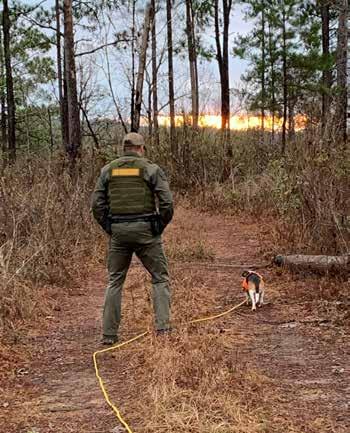
McHenry finds the work of a conservation enforcement officer appealing because he can be out in the woods or on the waters pursuing particularly egregious violators – commercial fishers violating catch regulations, people hunting at night from a roadway, out-of-season hunters or those exceeding their bag limit. But it’s the softer sides of his job that he truly loves – search and rescue, conservation education, and the extension of grace to people needing education more than sanction.
McHenry smiles as he tells of finding a car with a “help” sign in the window and clothes spread on the ground nearby, often a sign of panic. He tracked the man until he lost the sign. His beagle found the man, missing for three days. For McHenry, the positive feelings from those kinds of experiences last longer than the adrenaline blast of armed combat or a roadside drug bust. That’s a reflection of the positive person that he is. He’d just rather help, an ethos illustrated when he tells a story of catching, “some kids mud riding on public land. They had done several thousand dollars’ worth of damage. I could’ve written them a ticket and made a big issue out of it. Instead, I explained to them that hunters pay for the land they wrecked, that hunters are the only ones paying for it through Pittman-Robertson, and that by doing thousands of dollars’ worth of damage in an environment in which license revenues are declining, they are making it harder and harder to take care of our public asset.” It could have ended there but, “[t]hose kids went home and told their parents what they had done and what I had said. Their parents sent them back to me and they ended up doing a lot more work than required to repair the damage they caused. That kind of lesson lasts a whole lot longer than a ticket.”
To McHenry, “the right thing is just the right thing; it’s important to hold the line, but you have to apply common sense to be able to discriminate serious issues from something a simple verbal correction can solve. It’s the extension of grace.”
deployments in the Marine Corps. “You’re primarily going to get your reports from individuals, the longer you work in the area. When you deploy overseas, it’s time to pack up and go home before you really have a grasp on the area. It’s the same thing here. It takes a good year before you start learning names, faces and vehicles; you start to figure things out,” he says. “I really like to handle the big cases. So, I’ve got my deck of cards, like America had for al-Qaeda; I’ve got the same thing for my patrol area, but with my deer hunters. I learn names and faces and vehicles. It’s a big puzzle that just starts to piece together.”
Still, like McHenry, Weis voices the need to be respectful and kind in his interactions in the wilderness. “I’ve always tried to be the compassionate and nice guy. I don’t think being a tough guy really gets you anywhere in the eyes of people within the county. I feel like if I’m nice, they’re still going to do wrong, but at least they might cooperate with me if I do catch them. I try to treat even the worst dudes with respect. I’ve got a huge night deer hunter. He knows it, I know it, the entire wildlife commission knows it. And we both still treat each other with respect.”
The extension of grace is something North Carolina Wildlife Resources Commission Wildlife Law Enforcement Officer Zack Weis echoes: “Everything is case-by-case because no scenario is black and white. There’s a reason for why something’s happening, so every officer has to make that call.” Learning to make that call means spending as much time as possible on public lands and waters and, most importantly, interacting with the hunters and anglers who spend time upon them.
Getting to know people is a skill Weis picked up during
Though sanctioning lawbreakers matters, that’s not the core motivation for men like McHenry and Weis. “As a game warden, the importance of public lands is giving everyone the ability to hunt and fish. That’s extremely important to me, to allow everyone the chance to enjoy the wildlands we have in America,” Weis notes.
“A lot of private properties take that away from people. If you don’t have permission from the private property owner, well then, you don’t get the view, you don’t enjoy that land, or those activities,” he continues. “Whereas public land, whether it’s game lands or other public lands, gives you that opportunity to get out there. To me, it is extremely important for everybody to have the ability to enjoy the outdoors that we have in America. And I think it’s important
we have that moving forward.” Part of having that moving forward is eternal vigilance on the part of people like BHA members, on the ground and at the ballot box.

Weis says hunters and anglers have the eyes and ears that see and hear things that damage all of our efforts to conserve our wild heritage. “The people that come forward and tell me, ‘Hey, there’s a bait site here,’ or, ‘Hey, I saw this guy doing something,’ help out immensely. Enough responsible hunters coming forward really helps out me and everybody else. We get people stealing things off of the game lands by illegally baiting or going out there at night to deer hunt,” he explained. “I know this guy who is an avid bowhunter. He works so hard at getting way back into some of the game lands we have. And he called me just absolutely livid because somebody shot this monster 12-point buck he was after, at night. People know about that stuff. People see that stuff. And if people were to just come forward and give us those tips, we could prevent that from happening so guys like that get to enjoy their hard work, the effort they put into hunting, and someone doesn’t cheat the entire system.”
In North Carolina, where game laws are often different county by county, Weis educates hunters and anglers about their ability to change conditions and their obligation to be a part of safeguarding public lands outside of the woods and waters through civic involvement. “Try to get with your community boards and see when that voting process is, and go to your community meetings. … You know what’s right, you know what’s wrong. Think of your children, or your grandkids.” That long view is the kind of thing that drives young Americans to serve their nation. It is the thing that drives hunters and anglers to conserve our public lands and the wildlife upon them. And it drives people like Jason McHenry and Zack Weis to make conservation a profession.

Both men think working as a game warden is a great life and a great profession for people leaving the military and looking for a way to continue to serve. They cite a freedom to follow your instincts and enjoy the outdoors in the daily work, but more importantly, Weis says, “Having generations of hunting or fishing for our kids, for my son, to me that’s very important. Why not spend your time doing something so we can continue to have years of great hunting, great fishing and beautiful landscape? How many countries have you been to that don’t focus on protecting their wildlife? They’ve got no wildlife. They’ve got nothing there anymore. I think being able to protect that for our future generations is extremely important.”
BHA members across North America agree.

BHA member Russell Worth Parker is a retired U.S. Marine who writes and enjoys the outdoors in Wilmington, North Carolina. He would rather hunt ducks with his Lab, Jed, than anything, though turkey hunting is a close second. He is the vice president for the BHA Armed Forces Initiative at Camp Lejeune, North Carolina.
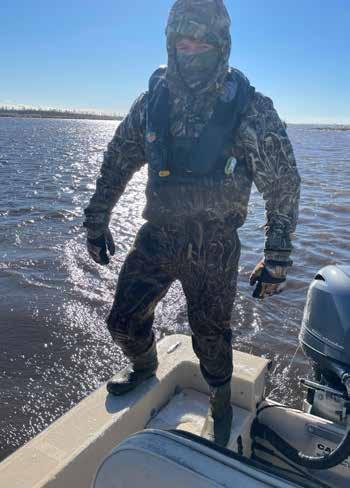
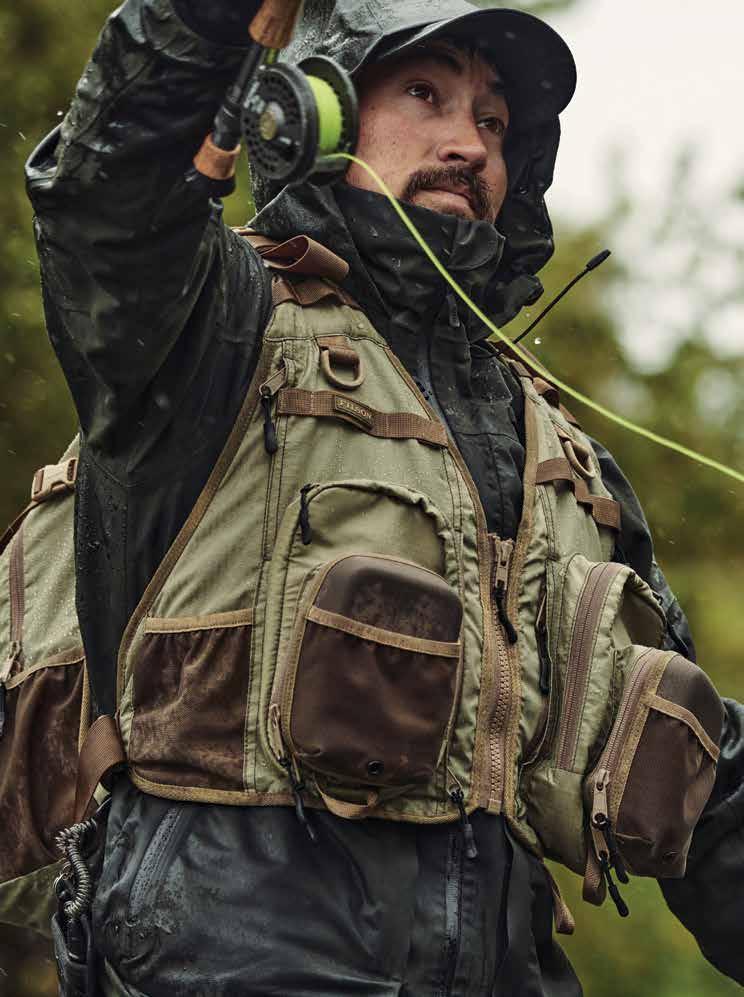
WITH
INTRODUCING THE NEW GORE-TEX BOUNDARY WADER COLLECTION

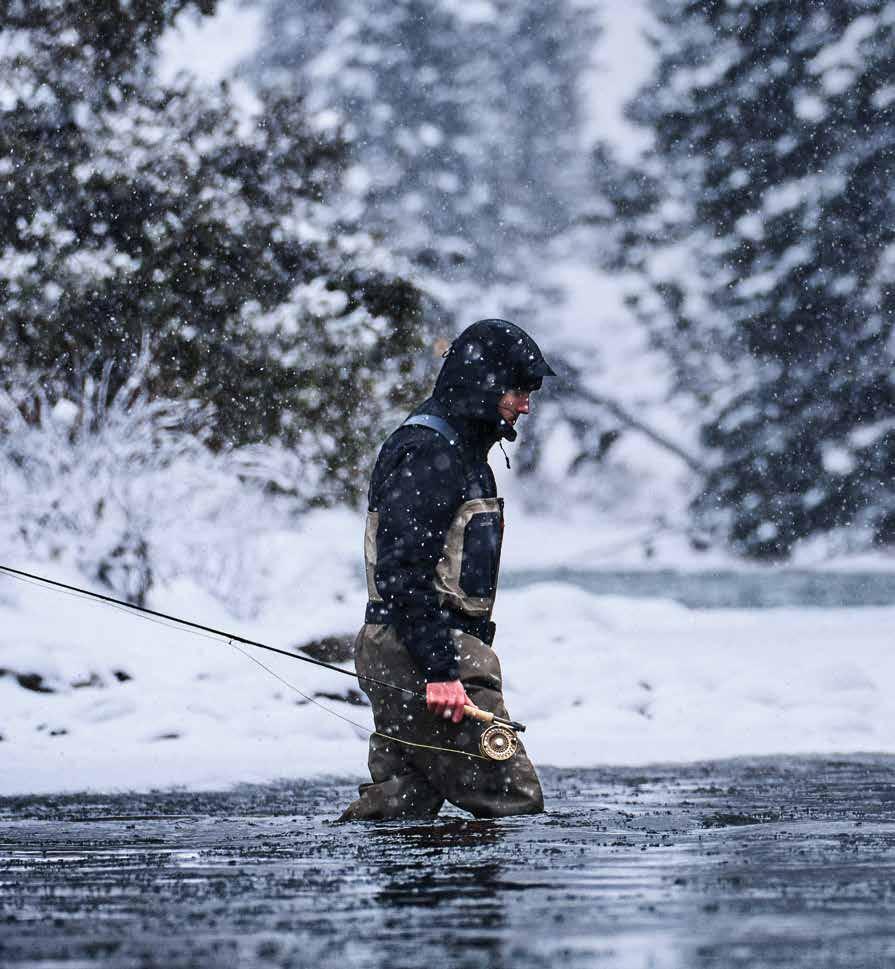


If you live east of the 100th meridian, as I did for most of my life, you may have never heard of a wild (or feral) horse or burro. If you live in the West, I can almost guarantee that you have a strong opinion on the subject.
Horses and burros are some of the most controversial animals in the United States. Legally, they enjoy broad federal protections. Socially and economically, many folks like to see them and put pictures of them on souvenirs. Ecologically, they are wreaking havoc on particularly vulnerable, native ecosystems. Plus, there are a ton of them. As of last year, the Bureau of Land Management manages more than 82,000 feral horses and burros on 26.9 million acres of public lands under their management in 10 Western states.
Horses and burros have few, if any, natural predators, and many herds are known to increase at a rate of up to 20% annually. That means that, absent any human intervention, herds can be reasonably expected to double every four or five years, leading to conditions that are bad for the landscape and inhumane to the equids themselves. Unlike livestock, horses aren’t moved across the landscape seasonally. Like other animals, they compete with native wildlife for water sources and ever-decreasing forage. However, unlike other animals, management actions to control populations of feral horses and burros are heavily dictated by Congress.
The Wild and Free Roaming Horse and Burro Act of 1971 – passed at a time when the future of the wild horse and burro was perhaps uncertain – designates feral horses and burros to be “living symbols of the historic and pioneer spirit of the West” and requires the BLM and the U.S. Forest Service to manage and protect herds of these animals in the areas where feral horses and burros could be found roaming when the act was passed. Congress’ annual appropriations process also includes perennial language that forbids any horse or burro be destroyed or be sold to be made into a commercial product.
There is no place where this issue is more poignant than the public lands of Nevada’s Great Basin.
“Nevada, the driest state in the nation, hosts more than 50,000 free roaming horses and burros, many more than the BLM’s own appropriate management level of 26,000,” said Karen Boeger, a board member for BHA’s Nevada chapter. “These current numbers are not sustaining land health or a thriving ecological balance with our native wildlife as the Wild and Free Roaming Horse and Burro Act mandates. Our current population represents over 60% of all the excess horses and burros in the United States. The continued proliferation of these free-roaming animals across Nevada’s desert lands diminishes land health, their own heath and, in turn, the health of Nevada’s wildlife, including iconic species such as the bighorn sheep, desert tortoise, greater sage grouse and Lahontan cutthroat trout.”
The best available science suggests that prehistoric equines, including several species in the genus Equus, have existed in North America for a long time. The fossil record shows us that these horses existed for several hundred thousand years, spread around the world, but disappeared from North America more than 10,000 years ago, around the time of the last ice age. They roamed the prairies with species of giant bison, dire wolves and wooly mammoths. These horse-like creatures were quite a bit smaller than modern horses, and little evidence exists to suggest they were domesticated or ridden, but we know for certain that they were hunted and eaten by the Clovis people. While the horses that roam the West today are perhaps descendants of those, a lot has happened in the last 10,000 years.
The best we know right now, these species of horses went extinct on the North American continent, and horses did not return until domesticated individuals were brought back by Spanish colonists and distributed through the trade networks of Native American and First Nations peoples. We don’t know exactly when this occurred, but we know that horses had reached the Paa’ko Pueblo, in what
is now New Mexico, by the turn of the 17th century. Since then, horses were released in the wild alongside the mass displacement of Indigenous peoples across the continent. Today, horses continue to be released on our public lands at a rate that correlates with the price of feed and boarding.
Horse advocates claim that these animals are native wildlife and have spent a great deal of time and money on DNA testing to draw a straighter and straighter line from ancient horses to today’s stock. Philosophically, there are plenty of conversations to be had about “baseline ecological conditions” or how long ago a species had to be domesticated and released for it to be considered “wild” or “feral.” However, a better question might be why a species of abundant “wildlife” isn’t under the management of the Tribes and states like all the rest of our wildlife in the United States. Instead, federal land managers continue to do what they can to address the harms overpopulation of horses and burros exert on our public lands.
There are only a handful of ways to reduce the population of any species – you can remove them from the landscape, or you can make darn sure that the ones that are there aren’t making more of themselves. Some combination of these two strategies is the most effective, but they are both expensive and challenging.

When horses are removed from the range, they are held in holding facilities until they may be moved to “off-range” longterm holding, put up for adoption or be trained in any variety of worthwhile programs, like those at prison ranches in Wyoming and Nevada. However, most of the horses being removed from the range, including the nearly 22,000 that were rounded up in 2022, are still housed in long-term facilities. Contraceptives are also frequently used – and heralded as a more “humane” solution by some – but most require more than one dose be administered by injection within a certain period. This can be effective in small herds, but is impractical for large, spread-out herds like most of those in the western U.S. Regardless, all these tools require financial resources.
The Bureau of Land Management was a $1.3 billion agency in FY23. That same agency spent nearly $150 million exclusively on the management of feral wild horses and burros. As of this writing, House appropriators propose spending $155 million on this issue in FY24. But even with this massive expense, it’s likely that the horse population on our public lands will continue to grow. Most of this money will be spent feeding and housing the horses and burros
that are held in long-term holding facilities, rather than removing additional horses from the range where they continue to cause harm.
There will always be folks who believe no horse should ever be removed from the range, and others who want to see all of them gone. For now, the path forward is unclear, but it is obvious that the current policy of the federal government is not solving the issue, is consuming significant resources and is doing a disservice to native wildlife, livestock and the horses themselves.
“The current state of overpopulation of feral horses and burros is significantly and irrevocably impacting native rangelands and wildlife. This is especially conspicuous where water is in short supply,” said Tony Wasley, president of the Wildlife Management Institute and former director of the Nevada Department of Wildlife. “This is not an issue of horses versus cows or horses versus wildlife. Right now, horses and burros have overrun the carrying capacity of the land. And for anyone who cares about horses, native wildlife and the health of the rangelands, we must find a more effective strategy. The dire nature of the current situation is both unsustainable and unacceptable.”
There will always be calls for more money, which is needed; however, it’s clear that managers also need more tools to solve the issue. Some of these tools, like a contraceptive that only requires a single dose, are technical and require scientists and engineers to produce. Other tools, like additional gathers or holding facilities, simply require resources. Further, others will require additional authority for the agencies to do more about this problem with the resources they are currently allocated. Overall, several strategies must be employed with close collaboration among Tribes, state agencies and federal land managers to make any progress on this intractable issue.
If you’d like to learn more about feral horses and burros, the film Horse Rich & Dirt Poor provides a visual account of the damage these animals are doing to Western landscapes.
Charlie Booher is a conservation lobbyist at Watershed Results LLC and holds degrees in wildlife biology, public policy, and natural resource conflict resolution from Michigan State University and the University of Montana. Outside of the office, you can find him hiking the mountains of Western Montana and re-learning how to hunt and fish in the Northern Rockies.
ABSENT ANY HUMAN INTERVENTION, HERDS CAN BE REASONABLY EXPECTED TO DOUBLE EVERY FOUR OR FIVE YEARS, LEADING TO CONDITIONS THAT ARE BAD FOR THE LANDSCAPE AND INHUMANE TO THE EQUIDS THEMSELVES.
Imagine if someone put the same time, thought, and effort into designing fishing apparel that you put into finding fish. Someone did; we’re Skwala. We make thoughtful, dependable, comfortable gear—so meticulously built and thoroughly tested that you hardly notice it. Allowing you to focus on more important things, like fishing.
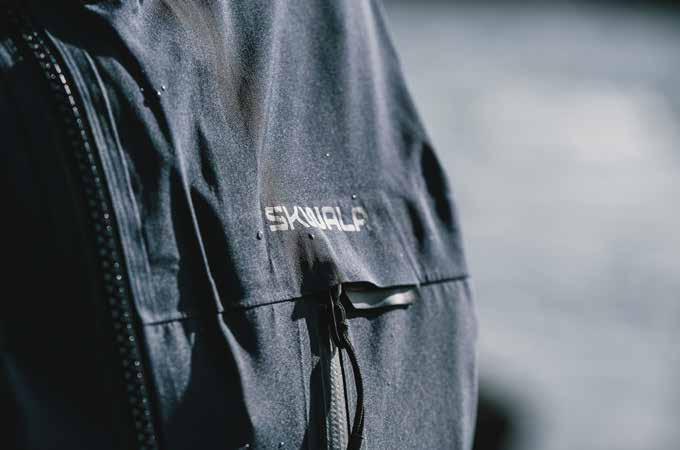






Every shot has a story, and the best stories start with Savage.


ACCURATE / driven / TRUSTED
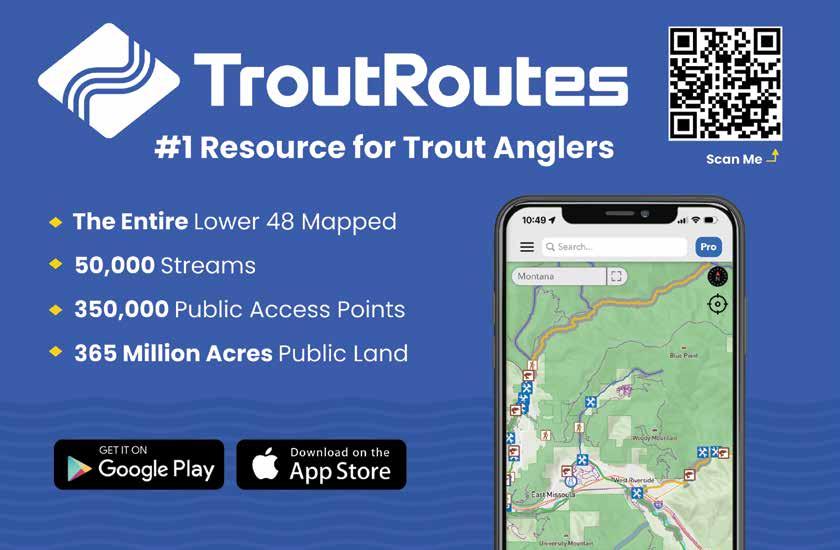


At full draw, it appears as if the eye, the arrow and the target are in perfect alignment. But allow yourself to hover and look down upon the archer as the string is released. To see it in slow motion would be to see the arrow glancing leftward as the string shoves it against the only obstacle in its path – the bow itself. But as the arrow moves forward, the shaft becomes parabolic, slithering around the riser, and snakes its way toward the target. Accuracy hinges around a singular task – keeping an arrow in flight such that the yawing of broadhead and shaft, fletching and nock, remain within the narrow corridor in which the forces that fight over its trajectory – drag, gravity, momentum and inertia – remain balanced. If the bowyer has done his task well, the arrow will strike true.

On the morning of the fourth day, the axe makes a metallic thumping as I drag it from the truck bed and across the tailgate. It is a different sound, a hollow and foreboding thunk of grave intent across ribbed aluminum, than the one it will make when it strikes the tree. That sound will be dull, deliberate, repetitive – and dead, like the sound of an upturned hoe handle being jabbed into newly plowed earth before dropping a seed.
The tree I select is one I’ve passed many times. I walked under it holding the hand of my wife when first in love. Later, I stormed by it while brooding over a war that seemed to never end. In all those years, 20 or thereabouts, I never took notice. Now I stand before it, father of her sons and the war over, truly seeing it for the first time.
The journey south is a long one, and it takes me three days of responsible driving. I’m too chicken-shit for irresponsible driving. Having kids will do that to a man, and I’ve got four. I am, as a matter of sums, very chicken-shit. We stay with friends along the way to save money. I guess I am cheap as well as chicken-shit, but at least I have friends. All the while, an axe lays heavy in the bed of my pickup, moving only when too little caffeine or an almost-missed exit pulls me over the rumble strip and back onto the path that is my way home.
I don’t know what trees think or feel, or what we are to them, but I know it must be something. However it goes, and whatever makes its so, I know in my bones I am of the same soil as this pignut hickory I am about to lay into; this red clay and black dirt where my feet are planted and roots are dug, just beyond the earth’s curved horizon from where my own life began. And so, the axe swings, the tree falls, and I split and load the staves into the bed of my pickup for the drive north. I have killed my kin.
The inlet is quiet, the break of dolphins through the briny surface audible even before their blowing. They, too, hunt the dawn. From three sides, the grove of hardwoods is reachable only by canoe on a
rising tide, and missing the transition will cost you. The fourth side funnels to a narrow strip of marshland, and getting there when the wind is right cuts off the only landward exit from the grove. But there is no trail that I can find. I don’t know where the deer come from, whether they live on the peninsula, wade the mud flat at low tide, or swim the brackish moat under cover of darkness, but they are here.
The surface of the bow’s white-wood backing is conspicuous in the gray stillness of northern winter. I force it cattywampus into the native stalks, hoping to mask its accent, but the incongruity is inescapable; another way in which we are the same. All attempts at refinement, the shaving of bark and hewing of excess structure from its limbs, have only made the bow’s wooden character more prominent.
diminished. Weakness erodes strength if you allow it to exist for long enough.
But resilience can be built into the bow’s belly using fire. Flame hardens the wood and enables it to resist the forces of compression, creating balance and symmetry. But too much heat, and the bow will simply break. There comes a point at which it can no longer endure the flame.
Bow wood is always fighting itself, the battle between tension and compression looking different depending on the species from whence the bow originated. Under the cambium, that spongy layer which lies below the bark, the outer growth ring of hickory is tough as rawhide, its fibers interwoven into a confused mass of woody muscle. It is as resilient to the forces of tension as you could hope for and makes a wonderful backing. When drawn, it springs back into place with authority.
But the belly wood of a hickory stave, the side which faces the archer as he draws, is less resilient to compression, and the cells of it can be crushed under the competing strength of the outer growth ring as the archer brings the bow to full draw. With time and repeated strain, the bow will simply remain curved, following the string even when unstrung, and its ability to cast an arrow is
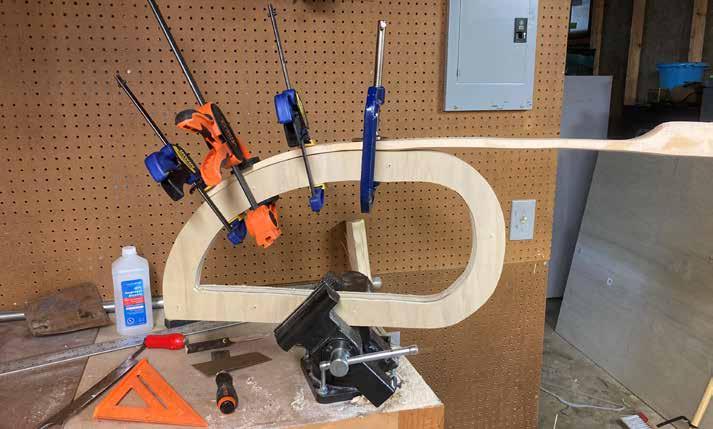
A rifle gains its efficacy from the magic of gunpowder, separating the shooter, just a little, through technology and distance. But the archer’s own body is the bow’s killing power. Potential energy stored in the bow’s limbs, energy that came directly from me in its creation, pulled to maximum strength with my own muscles, passes in kinetic form into the body of my prey. There is something intimate and almost sensual in the final act: the penetration of one body by another in a transition of power, that in the end, supports new life. The process is immortal, if not the participants. Energy can neither be created nor destroyed, only converted from one form into another.
Upwind, the grasses arch their backs, not toward me, but away from her. In the translucence of dawn she glides through the phragmites and cord grass, her yearling following close behind. Watching the doe cross the salt marsh, I feel my predatory spring beginning to coil, my hand tightening around the bow. The closer she moves, the smaller I become, until I am nothing, a heartbeat in the tall grass. Until I am nothing.
When I break a bow, it’s usually because I’ve allowed a hinge to develop, a weak spot where the wood is worn thin and the stronger sections “hinge” around it, collapsing upon its weakness. There doesn’t seem to be any particular pattern to where these hinges occur, other than they always seem to develop at the point at which my patience for the process wears most thin. Only keeping focus on the why, rather than the what and the how, keeps me from grabbing my rifle and filling the freezer as I have always done.
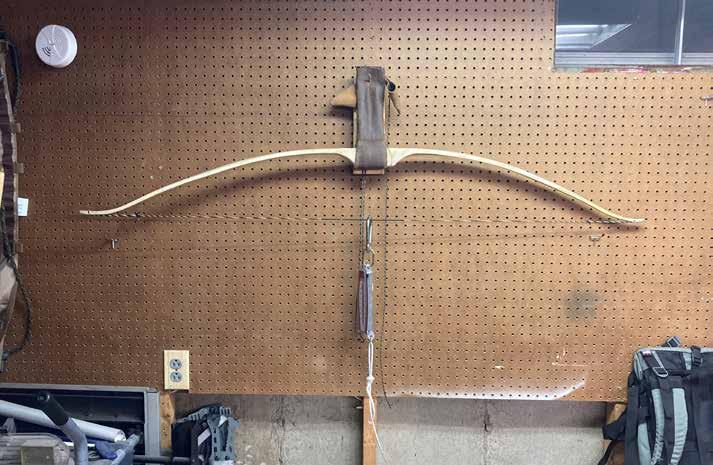
The why is this: I want proximity. I want to be so close I can hear them breathe. I want to know their names. I want to count coup. I want to confess my role, not as sinner, but as one who lives within the old paradox, the one in which we must be close to, and love, those we kill and consume, because their future is our future. When I feed the meat to my sons, I want to give them a thousand hours of labor, the experience of a hundred failed stalks, and tell the story of how the deer and I collided under the red oak.
To achieve proximity, the archer steps into an evolutionary radar within which he is not welcome. Within the range to which a selfbow is effective, so too is the pounce of a lion, or the sudden rush of a bear. Though the deer has never seen a lion, and the rush of bears has been replaced by the drone of Honda Civics, she remembers. She will remember me also. And so, I collect the broken pieces of my failing and begin again, this time more patiently.
Her ears snap back toward the forest, and I pay attention to what she pays attention. A buck looms from the opening, a crown of antlers upon his brow. Eight daggers atop twin broadswords of bone. His mind is addled, his senses dulled by the desire to procreate, his adrenaline strung out by the battles fought pursuing her. He is not in his right mind. Like the walking dead, he stumbles past, just out of range, drifting on instinct towards the ephemeral.
Her gaze follows him until the tree, where she freezes. Seven yards. A single step. She is so close that I feel her stomping in my heart. She is inside my heart now, beating, hammering, fluttering. When she blows, I can almost feel her breath, taste the acorns from the red oak I crouch behind. She knows I am there but doesn’t know that it is me. She doesn’t know the trepidation she causes me but feels the anxiety quivering in the wooden shaft that lays across my bow shelf, the one that will pass through her lungs, behind the razored broadhead, ahead of the barred fletchings. She doesn’t see the frothy blood my mind already conjures along the path, but she feels the pressure change building between my shoulders as I draw, a final storm bearing down upon her. She doesn’t see, but she knows. I cannot take my eyes off it. But the yearling steps ahead.
THE PROCESS IS IMMORTAL, IF NOT THE PARTICIPANTS. ENERGY CAN NEITHER BE CREATED NOR DESTROYED, ONLY CONVERTED FROM ONE FORM INTO ANOTHER.
What most stood out to me was the deer’s youth. Like a teenager, knowing what to do, but not quite how to do it, a façade of confidence and a total absence of caution, even when his mother held back. That was his terminal mistake. The broadhead intercepted him mid-stride, slicing his aorta and clipping the frontal lobes of both lungs as it passed. He stumbled 74 yards before lying down on the edge of the water to die. A swirl of brown and white, his mother disappeared into the periphery as my gaze followed him to where he rested among the ferns.
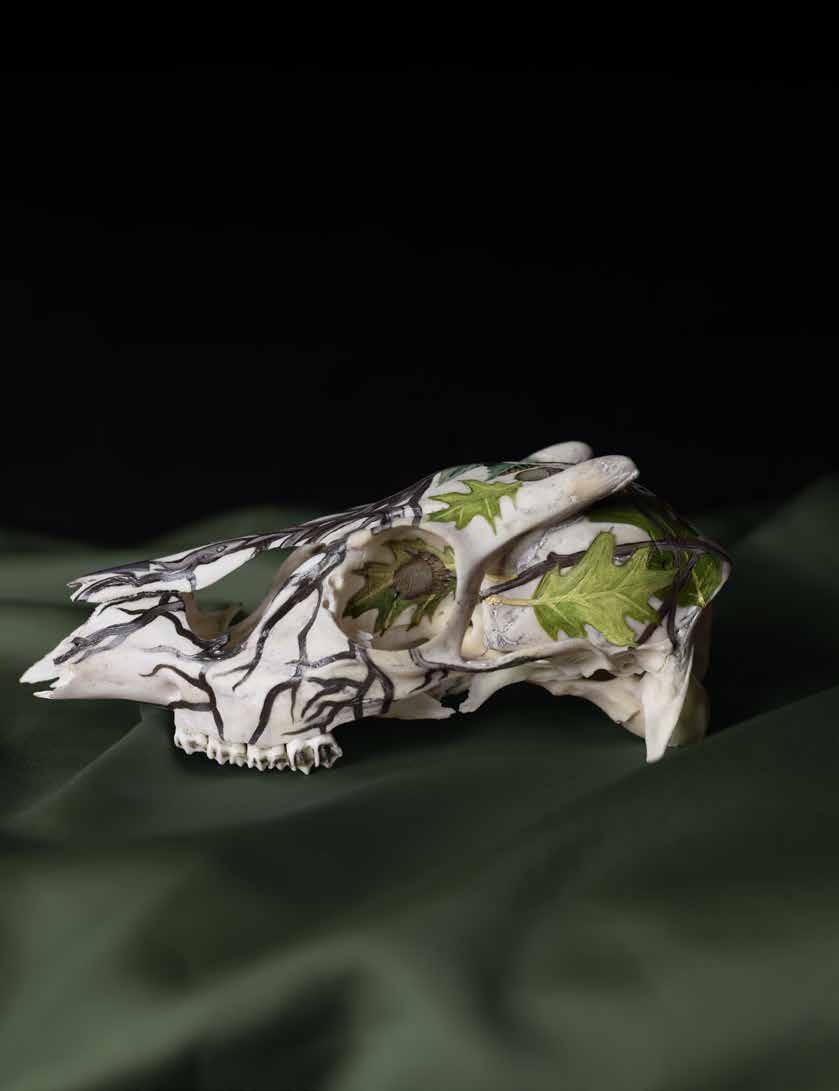
I looked down at him. Bright red blood, infused with oxygenated bubbles, covered the ground in irregular patterns around his body, suggesting that he’d contemplated exactly where he would lie down before the suffocating lack of oxygen collapsed him in death. My part in this was inescapable; the two halves of my broken arrow, covered in viscera and blood, hung in my left hand. To that deer, I was the agent of apocalypse. To me, he was life. I was not overcome with grief. I felt no great remorse flooding over me. I saw no injustice in the final act. I felt only relief and gratitude. Maybe I am broken, and a killer. Or maybe I am human, and hunting for my food. Whatever I am, it felt right to do it.
The yearling sits before me now in altered form. Some parts I have eaten, while others I can only observe and admire. When I look at him, I think of the red oak and the hickory, of his story, and of mine. I think of two ends of the same origin circle colliding down by the water, passing one another again and again, each time more refined until the roots are tangled into something I understand as process.
Outside, shattered beams of sunlight filter through the canopy and onto the forest floor. Up where the light meets the leaves, it is beginning again.
BHA member Jake Forrest Lunsford has recently written for Garden & Gun Magazine, Backcountry Journal, Providence Journal and the Tom Beckbe Field Journal. You can follow his work at jakeforrestlunsford.com or on instagram @jakeforrestlunsford
Artwork: Kobe Jackson Photography: Sydney HowardTO THAT DEER, I WAS THE AGENT OF APOCALYPSE. TO ME, HE WAS LIFE.

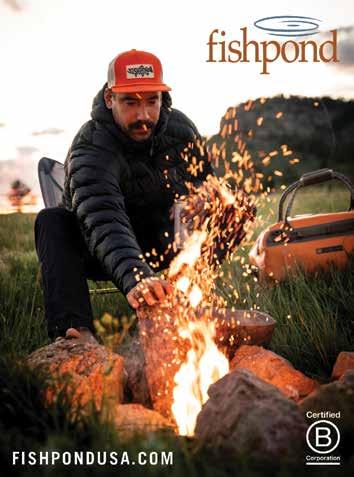



Steeped in tradition, built to perform. With comfort, traction and durability that stand up to the hunt, the new Recurve boot is made for swift, confident movement through tough terrain. DANNER.COM/RECURVE

M ulti-piece trout rods that perform like one-piece rods, the new Trout Pack Series features handcrafted St. Croix quality and proven performance in two highly packable three-piece designs to support elevated o -grid angling adventures.



Long September light fades down the hill. Most of the canopy is still green. The fringes of maples and tulip poplars begin to turn red and yellow, a slow fire building toward fall. Squirrels will start to feed once the sun falls a little more. In southern Indiana, the cold takes its time coming, and I wear a t-shirt on the walk to the creek.
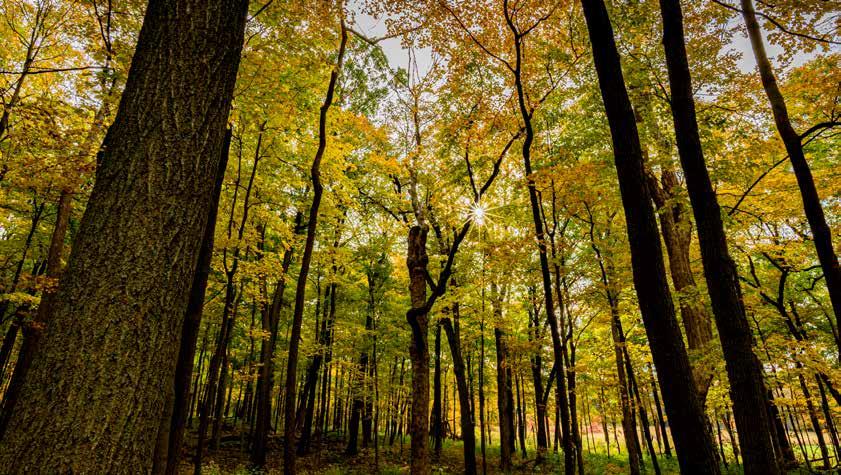
An hour ago, I rushed out of my Intro to Creative Writing class, grabbing student poems about high school romances and intramural basketball heroics. I hustled in the hopes I could reach the parcel of state land outside of Bloomington with enough sun for a two-hour hunt.
By the time the bus finally pulled up to my stop, I leaned against the door to burst across the street. Muscle cars driven by frat boys soaked in body spray roared past. I reached my apartment and threw my backpack down next to the 12 gauge and box of shells, changing into overalls to the tempo of electric dance music pulsing above me. Young women laughed at what sounded like a spilled drink on the kitchen tile.
By the time I was loading the car, the party had moved onto the open-air hallway looking out into the parking lot. Two women in crop tops hung wet towels on the railing.
in the downed leaves, and for a moment I imagine a buck with his nose to the ground following the path over the ridge, tines heavy and dark.
After the ghost buck evaporates, I think about the chunk of change a non-resident deer tag would’ve chomped from my student stipend if I’d decided to chase whitetails. The non-resident migratory bird and small game license were enough to make me swallow hard, but by asking for some extra teaching assignments, I wasn’t going to have too much trouble making rent.
A gray squirrel moves along the ground, each bound sounding like a moose in the dry undergrowth. About 50 yards out, the squirrel is too far for my fixed modified choke. I wait until he dips below a rise to jump the creek and slowly peek around the trunk of an oak. The bushytail scampers up a poplar and disappears into the crown. A fox squirrel barks in the maple behind me, signaling that I’ve blown out this corner of the woods.
I REACHED MY APARTMENT AND THREW MY BACKPACK DOWN NEXT TO THE 12 GAUGE AND BOX OF SHELLS, CHANGING INTO OVERALLS TO THE TEMPO OF ELECTRIC DANCE MUSIC PULSING ABOVE ME.
The creek shrinks to a trickle this late in the year. A weak spring at the bench carves the limestone into a ravine so deep it feels more like Kentucky or Virginia than Hoosier-land. I find a fallen hickory and sit watching the opposite hillside. Deer trails etch themselves
Like the water, I follow the lowest point down. Crossing when the bank is too steep to balance on, pausing to look for geodes that reveal themselves with every heavy rain.
Growing up deer hunting in Pennsylvania, I spent days shivering 20 feet up in a cherry waiting for a deer. But here, with the heat of the day still hovering, I’m grateful for Indiana’s early squirrel season and the opportunity to be comfortable in the woods.
Between the skinny beech clones springing from the mother tree’s roots, I see two grays chase each other. Their commotion combined
with the little waterfall to my right hides my steps, and I creep to within 20 yards. The one jumps onto an exposed root, and the shot sends it over into the ditch beyond. I find the squirrel still in the leaves. The front right shoulder is splintered, but the rest of the meat is untouched.
I’d thought about bringing my .22 to Bloomington, yet the possibility of hunting doves and ducks, along with no secure place to store my firearms in my apartment, meant the single, well-worn shotgun was the most practical choice. I didn’t mind the extra time checking the meat for pellets or cleaning bloodshot. I wasn’t in a hurry to get back to Jane Eyre.
The gray was probably born the year before. Tail full, haunches heavy, even the back was fat. As the crow flies, the nearest cornfield was a mile away, making this squirrel one of the most backcountry critters in the state. I haven’t heard a car since I turned off the paved road.
This block of state forest land is just over 1,000 acres. Back in Pennsylvania, I grew up on the edge of over 41,000 acres of public land, with nearly a million more an hour drive away. Spoiled by the sheer size of land to roam, I was shocked by the vast tracts of private land unavailable to me when I moved to Indiana. Yet the more I explored even the 100-acre public plots, the more crevasses of wild I found. As a grad student, I didn’t have the time to spend days away, so these tracts were perfect for my short excursions. A few squirrels could make the week. An outing with the gun breaking up the monotony of bus rides and class attendance, the loud music and thin walls.
Tucking the squirrel in my backpack, I climb up out of the ravine and dive into the next. My ears still hum with the shot as I stop every 100 yards to wait for an active squirrel. The 12-gauge blast was the loudest sound in the woods. I was the loudest thing in the woods. I hadn’t been the loudest thing anywhere in the last month. Train horns, screeching brakes, subwoofers and the shrieks of college kids heading home from the bar drowned me out.
I’ve been the loudest creature on creeks in the Bob Marshall Wilderness or in the middle of the Appalachian Mountains, but here in Indiana, a state known for basketball, corn and soybeans,
finding the quiet of the woods, then shattering it with my gun, felt strange. Not in a regretful way – I’d bought the license, shells, gun, and drove out here on purpose. Just a strange way.
I sit at the base of an oak and pull on the long-sleeve. The sun’s angle has shifted, and the shadow of the hill across from me slides closer to my feet. The tide of night coming in.
Scanning the branches above, I see a squirrel jump from tree to tree, and I wait for it to stop. The gray leaps and clings to branches so thin I only see them once the creature lands. The movements aren’t fearful, only deliberate. I try to position myself downslope in the general direction the bushytail is heading.
On a branch close to the tree, the squirrel works a nut it must’ve stashed in the crotch. I can hear the scratching of the incisors on the acorn’s shell.
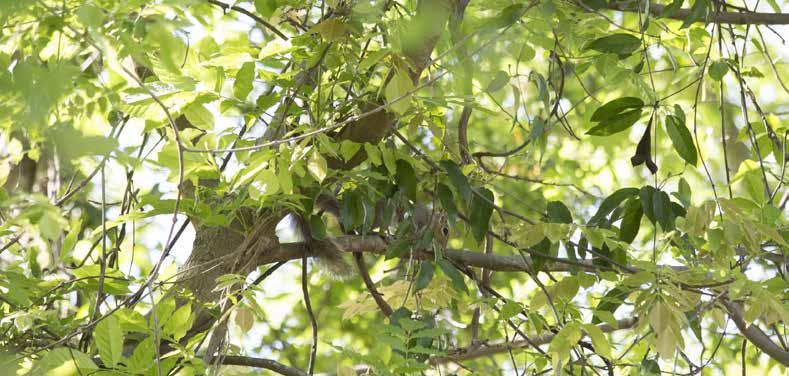
Cheeking the gun, I aim the bead to the left of the head so only the edge of the pattern will connect. The squirrel rockets off the limb at the shot, leaves kicking out and away from the body.
I hold the two squirrels I killed up by their tails and admire the different shades of their fur. The wiry-black strands of the tail, the thick grey along the back, the white running from the throat down the belly. I unload my gun, relinquishing the rest of the day to a slow walk out on the two-track. The squirrels swing from my hand and every so often I pause to look at them, then resume the hike.
As I near the final turn that will take me to my car, the list of assignments to complete, books to read, and poems to grade rise up from wherever I folded them away for the hunt, but they quickly disappear as I think about tomorrow’s meal of biscuits and fried squirrel.
Crows fly over, and their caws bring me back to the woods. Crickets begin to sing. The squirrels I carry are silent. A greathorned owl will soon be the loudest thing in the woods.
Noah Davis is a BHA member and works for the Theodore Roosevelt Conservation Partnership. He’s traded bushytails for grouse in Montana but looks at the fox squirrels in Missoula with a certain hunger every fall.
TITANIUM

CARBON FIBER TENSIONED

THREADED BOLT KNOB

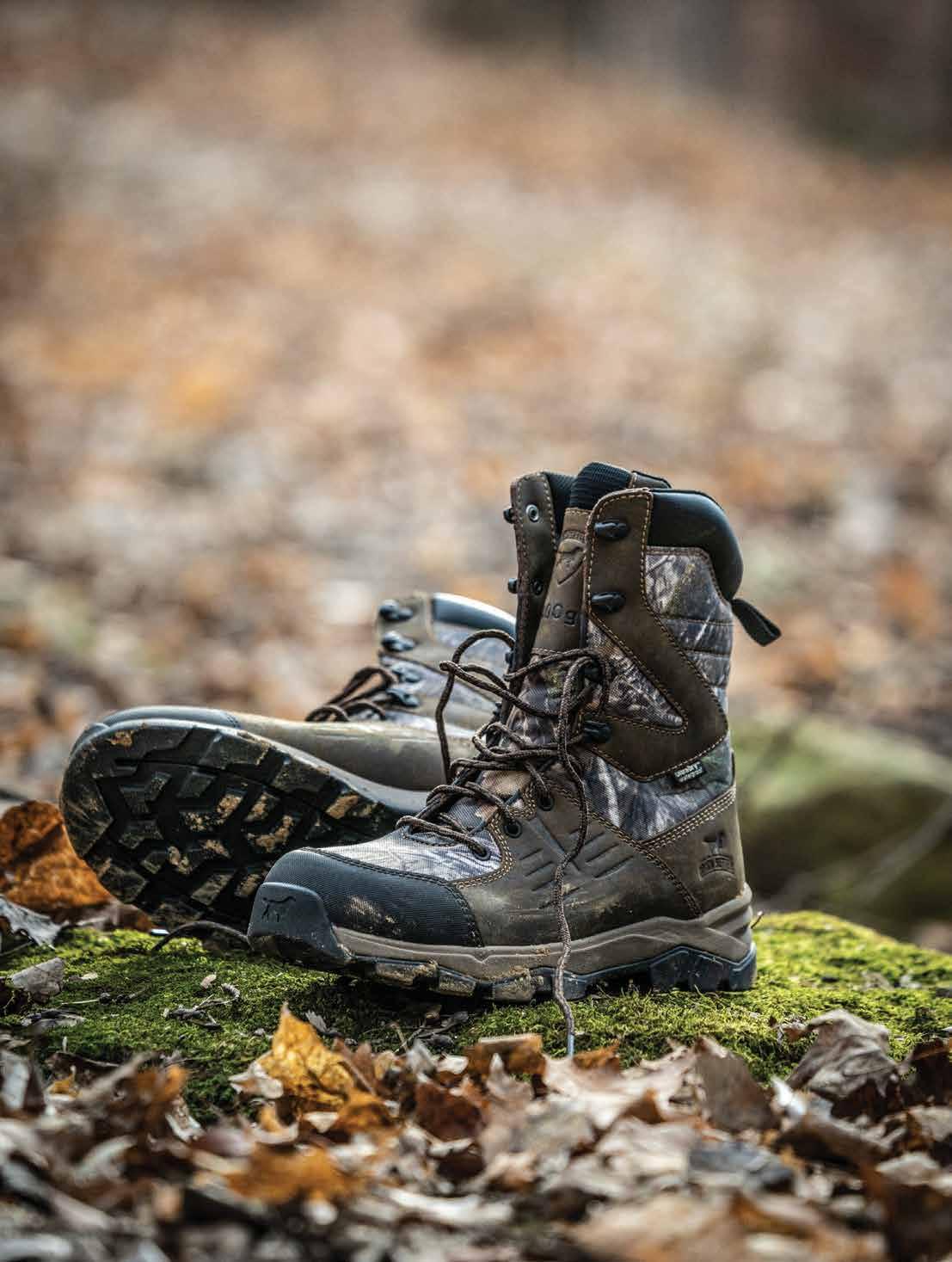
“Where are we?”
My son was working over the semi-frozen granola bar in his cheek and looking up at me with the question still looming between us. Water formed a steady, beaded stream in front of his face as it ran off the hood of his raincoat.
“Hell if I know,” was all I could mutter as I slid my mouth diaphragm from my palate and into my cheek. I shook my head and looked up to darkening clouds, which seemed to swallow the world around us.
My response wasn’t entirely true, though, as I had a pretty good idea where we were. By that I mean we were either up an unnamed creek to the north of the ridge I wanted to be on or up the named creek to the south of the ridge but, again, I wasn’t 100% sure. Somewhere in the thick willows, alder and beaked hazelnut, interspersed with the ups and downs in the folds of the land, I had lost track of exactly where we were and where we were going.
To the uninitiated, one could presume, based on my description of our circumstances, my son and I were lost. This is incorrect; we weren’t lost, and we weren’t panicking. We were hunting elk in an area we had never been. We were walking on trails with no boot prints. Like generations of fathers and sons before us, we were writing an adventure story to be told to our family and friends. Our pursuit of our winter’s meat was driving us through rain and cold in the hopes that through the bleak veil of cloud the shrill cry of a bull elk would pull us closer toward our goal.
I would like to say I put an arrow in an elk that day, but that never happened. We worked up onto a bench, picking our way along a game trail, cow calling. At one point the rain must have got to me because after flushing another grouse, I told my son Jonah, “Go

ahead,” to which he proceeded to go crashing through the aspens with his .22 trying to get us a couple of spruce hens for supper. I was so focused on watching him in amusement that I never noticed the three cow elk 30 yards away, watching us until they themselves crashed upslope. No elk, no spruce hens.
That night, I broke a cardinal rule on my elk hunts and lit a fire before there was anything hanging on the meat pole. (I am a firm believer that there has to be a certain degree of suffering before reward.) We dried our gear and warmed our hands and feet while the small creek tumbled past. We ate our meals and climbed into our tent, dry and warm, only to be drenched again the next morning in the first five feet of walking through rain-laden alders. Again, we got into elk, and again we came up empty handed. Still, through the wet and cold and many hard miles, we were happy.
The following morning gave way to the general rifle opener in Alberta, and my son and uncle would go on to take bulls, both of which I had the privilege to call in for them. When I reflect on that hunt (like most hunts), it isn’t the killing that I remember. It is those days of getting lost and pushing myself further and deeper into the unknown with my 14-year-old son beside me. And sitting beside a small fire, warming our toes and joking and carrying on as the September moon emerged, cresting the ridges looming over us.
A fresh fall and another hunter in the fold. As is tradition, when my son Gabriel turned 12, his first hunt would be just him and me, along with my father and my friend Peter. Apprehension loomed because of my children he is the most unsure about hunting. Like many people in today’s world, the true value and meaning of hunting can be lost with the notion that you can just go to the grocery store.
“How can you say you love elk when you shoot them?” he asked.
I told him it isn’t about the animal but what they represent. I tell him when elk are on the landscape, the land itself is healthy. That the places you must go, physically, mentally and, yes, spiritually, to immerse yourself in their world, brings you a closer connection than anything you will find on a smartphone or on TV I told him killing an elk brings our meaning full circle, life and death, hunter and prey. Finally, I told him we need to eat.
Did he hear it? Doubtful. Like most things in life, it must be experienced firsthand to be fully understood. My final pitch was that hunting is a life skill that his mother and I feel is necessary for him to learn and in that he reluctantly agrees. Our summer is spent at the range getting him trigger time and laying out reasonable expectations, for myself as much as him. I tried to temper my own excitement with the realization that I may push him farther away. I ask myself, how will I react? How will I quell my emotions in the event he gives up? I noticed myself growing anxious as summer gave way to fall.
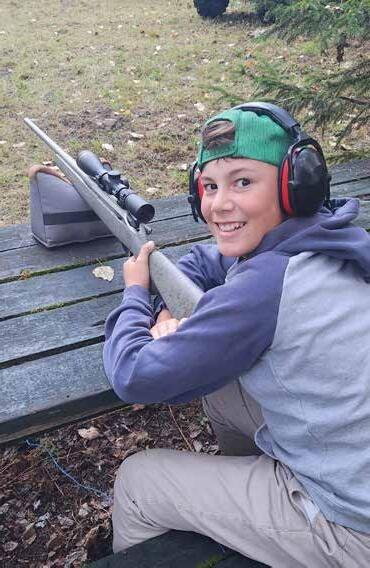
Luckily, for me and I think as much as him, he starts to get it. The more time we spend in the hills the more you can see and hear the change. Like most things worthwhile it isn’t easy. At one point, on the spine of a ridge, battered by wind and heat, I catch what I think is, “I hate you,” over the whipping of branches in the wind.
Too far, I think to myself; I have pushed him too far. Soon after I am calling back and forth and interacting, both visually and verbally,
with a bull elk. I explain what the bull is saying and tell him what I think he will do next and why. His voice breaks as multiple bulls are right on top of us. “Holy crap,” he says.
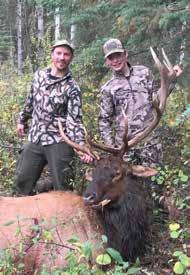

“Holiest of craps,” I say.
Before my eyes I am watching my son become a hunter. I am not watching my little boy anymore but a young man. He learns to recognize the smells in the poplar stands and catch the faint hint of elk on the breeze. I catch his sly smiles as he realizes what it can lead too. He learns to read the sign on the trails and that when a spider web breaks across your face it is time to find a more used trail. Soon the agony gives way to enjoyment, and the anticipation of what is over the hill or around the corner supersedes all else. Our time by the firelight is one of questions and answers. And of laughter. Slowly, I think to myself, he is getting it.
But we are elk hunting. We hunt hard for four days and come up empty handed. On the fifth day I think to myself our luck has gone from bad to worse. We blow chance after chance. I am getting anxious. We make plans to head to a high creekbank that overlooks a small meadow for the evening hunt. It is the same place my older boy Jonah shot his bull the year before. We hike in as the sun begins to make its turn, and as I move to our vantage point cow calling, I bump two cow elk that race through the trees and out of the meadow. At this point I feel that I am tipping over the precipice and racing towards defeat.
We sit in silence and just look out over the meadow. In his thick

I
FROM
IN WILD COUNTRY WHERE VAGUE MEMORIES OF A LONG-AGO HUNT REMAIN, AN OLD MAN WILL LOOK UP AS THE RAIN FALLS ACROSS HIS FACE AND ASK HIS NOW GROWN SON, “WHERE ARE WE?”
Polish accent, Peter pipes up, “If anyone asks, we never hunted Sept. 18,” to which we all chuckle. The sunlight starts to fade, the wind changes in our favor, and as if on cue it begins to quiet to a whisper and then nothing. The valley is silent, and we are just left sitting and watching. I let go of my expectations for the evening’s hunt and admire the fact that my 12-year-old son, who I was sure would never hunt, is quietly glassing the drainage across the creek from us.
We sit and watch a spike bull work across the meadow toward us. He changes course when he catches the scent of the two cows that I spooked earlier: his search for other elk obviously taking a more promising course.
“What time is it, Peter?” I ask.
“7:49,” he responds.
“At 7:55 I will start cow calling,” I tell him.
Last light is 8:30, which would have given us enough time to make a play if we got a response, I had thought to myself.
I lean back on my backpack and grabbed my bugle tube and put the now chewed and soggy diaphragm in my mouth. At 7:55 I begin to let out a chorus of soft mews and excited chirps. I picture in my head what I was trying to represent. It exits the bugle tube and echoes across the valley. My calls penetrate the dark timber and reach into the growing shadows. I turn my head and send calls in every direction, as though I were a lost cow and calf pair seeking other elk.
Immediately, across the creek a bugle rips back at us. I smile and look at Gabriel. “There’s your bull,” I say.
Peter and Gabriel quickly slide down the bank to a small washout and are getting set up when I see the bull break the timber at a trot. He bugles again and is heading right for us with a young cow elk trailing behind. No time, I think. In an instant he’s at the edge of the meadow and is walking onto the long gravel flat that separates
us from his side of the creek. The bull looks in my direction, and I realize my heart is pounding. As he keeps working in our general direction his attention redirects to something to my left. I let out a soft mew and the bulls gaze snaps back to me. He turns, and in the same instant I realize he is offering up a broadside shot to where I think Gabriel and Peter are, I hear the report of a rifle and the smack of the bullet.
The bull spins and heads back the way he came. Only this time, at the top of the opposite bank, he teeters and tips over.
Like that, my son has killed his first bull elk. Most would think that is the moment one is defined as an elk hunter. To me, his father, however, that moment became reality when his boot print fell square into mine on a muddy game trail in a lost place.
I am sometimes asked by people who have never hunted, “What for?” I usually respond with the whole meat explanation because it is the easiest for them to make that connection. It is more than that though. Just as I view animals like elk on the landscape as representative of a healthy ecosystem, it is my firm belief that we the hunters represent the same very thing. Without both predator and prey, all is not well.
I hope, sometime long from now, deep in wild country where vague memories of a long-ago hunt remain, an old man will look up as the rain falls across his face and ask his now grown son, “Where are we?”

To which the son will smile and reply, “I think I remember.”
BHA member Jeff Lauze lives in Cherry Grove, Alberta, with his wife and their four boys. When not chasing kids or playing chauffeur, he can be found, usually with the boys in tow , chasing all manner of fish and game in the provinces of Western Canada.
HOPE, SOMETIME LONG
NOW, DEEP















































































































NO MATTER WHAT THE SEASON.
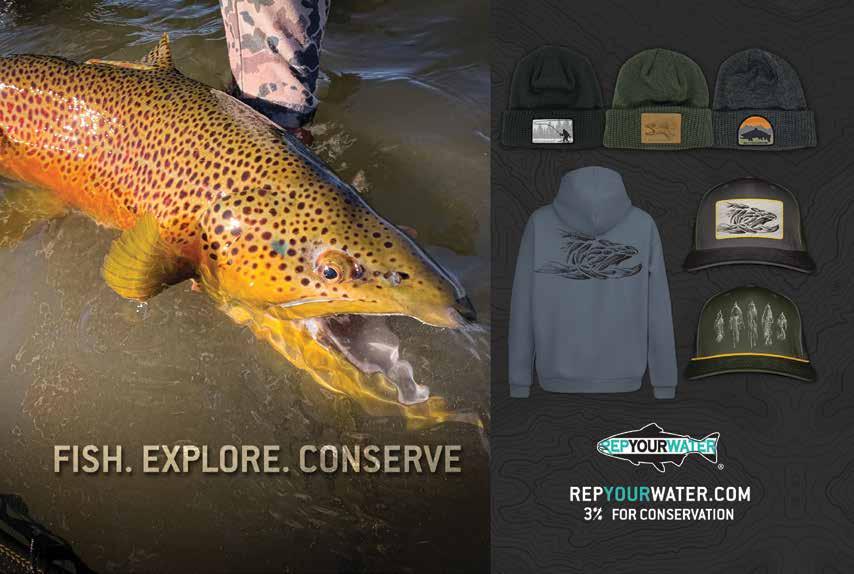
NO MATTER WHAT THE TERRAIN. GO WHERE OTHERS CAN’T.™

A piece of who I am as a sportsman is a reflection of my time as a child, building my Johnny Thunder sets of Legos, seeing myself as an adventurer and finding myself lost in the world’s wildest places. I doubt that piece is ever truly lost, but it can somehow be misplaced among many years of ever-growing responsibilities.


As a kid, I would lose myself in the backwoods of inner-city Atlanta. There, time would stand still.
Now, being lost in the woods means potentially missing bath time for my own kids. And being stuck in the woods, as it turns out, is still less worrisome than 2- and 3-year-olds working their damnedest to avoid going to bed. (The only thing close to comparing to bedavoiding toddlers is my crazy, running pointers hearing my recall whistle as the sun falls back toward the horizon.)
The close of day means bedtime for these dogs, too, ending the bird-drunk thrill of following my pointers’ noses, but also the thorn-slashed nose of my young setter, blackberry thickets snatching the tender area that my chaps don’t cover, and the worry of cottonmouth encounters.
So why do we do it? Why endure such such hardship and worry for such small potentiality? The chance is always great that many miles will pass with birds unseen or, worse, unfound. But I chose this lifestyle, and I’ll continue to choose it each day – dedicated to each of my animals, the countless miles on the road, and a discipline that has taken me well outside of my own understandings.
I wished early on that hunting would take me to places far and wide. It has. I’ve been closer to the Canadian border to hunt ruffed grouse than I’d ever imagined. Hell, I didn’t imagine it at all because traveling that far for something like that was never even a thought in my household growing up. But my buddies at Landmark Christian School knew that God could be found way out deep in the prairies, and that there would truly reveal what good Christian folks might call Amazing Grace.
The idea of hunting America’s most elusive gamebirds never seemed real for me though. I’d never felt the weight of our solar system in full until spending time with Ed Arnett in the Sandhills of Nebraska, connecting with BHA members Will and Max – a father and son celebrating Max’s graduation.
There I would lay under the blackness of night, running my fingers along the line of the planets, the reflection of the stars illuminating the nail of my index finger.
I was blessed to be a part of that shared experience, because my dogs have the natural ability to point – not just to birds, but also to experiences of a lifetime. They delivered a great time for five gentlemen in a landscape untouched and unmoved since the Ice Age.
The spirit of upland hunting is inherently communal, in both the physical and mental spaces. Spending time with friends and family, behind one dog or a brace, brings us back to what looks to be most right about human nature.
Humans have hunted together with each other and, yes, with dogs for millennia. It’s primal. It activates the various neurological pieces of what I come to refer to as the “triune” brain – derived from a 1960s theory which divided the brain into three distinct areas relating to instinctive, emotional and rational thinking.
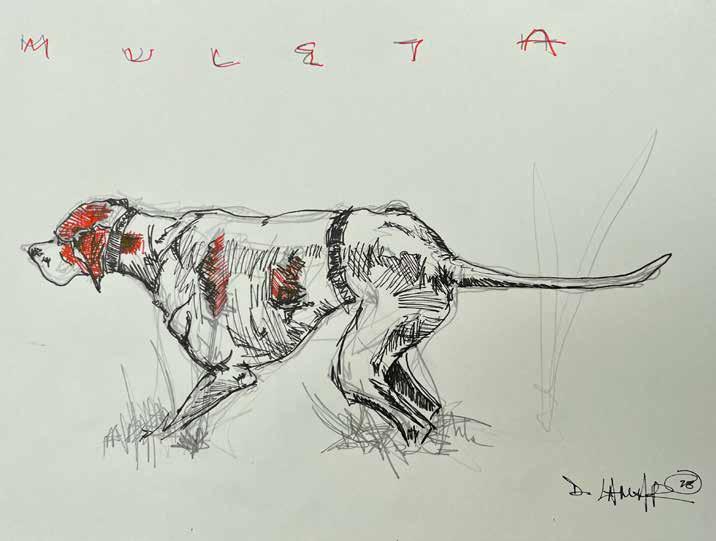
I’d like to think our time afield connects the primitive brain to the emotional brain, and both support the rational brain.
Hunting and fishing activate what is most instinctual about being human and help determine our subjective truths about the natural world and our experience in it.
I think the creative qualities within the hunter’s brain flood us with nostalgia – colors and aspirations – for that which we have once seen and can no longer tangibly hold.
Our emotional brain steps in as we navigate the sensational river of longing and the bogs of our memories. It’s the emotional piece that prepares us, year after year, to engage with the physical once more on those cold, dark mornings, awaiting the magnificence of a sunrise – and honors one’s diligence to the process.
I WAS BLESSED TO BE A PART OF THAT SHARED EXPERIENCE, BECAUSE MY DOGS HAVE THE NATURAL ABILITY TO POINT – NOT JUST TO BIRDS, BUT ALSO TO EXPERIENCES OF A LIFETIME.
Walking into the sunrise, as my young pointers and setter cut through the brush, I devote myself to the songs of the breeze, whistling to the tune of Gymnopédies: No. 1 – the version transcribed for guitar. The cadence transitions and moves with my young Ecuadorian pointer. (It was only recently that I began to realize that my dogs would be the connecting point to my interest in Spanish culture and community and to great writersportsmen and the narratives that told their truths.)
My introduction to hunting over a pointer of Spanish lineage draws a vision of the power of a handshake between Hemingway and Picasso, where in between, emotion yet again meets physicality.

I circle a standing point, interrupting the tension between this little Spanish bird dog and its quarry, and flush them into the fury of El Toro –release, squeeze and then inhale a whiff of gunpowder. Into the next abyss – further into the unknown.

As I walk away, in search of the next covey, I acknowledge that taking a bird pushes its spirit further into the wild. In essence, our spirits are always moving. It’s only our physical form that we leave behind when we leave the earth. (That recognition helped better inform my understanding of death, something that I’d become acutely aware of, and very close to, at 12 years old, as I spent those last moments holding the hand of Momma.)
It’s wingshooting – wild dogs, wild birds, wild places – that has facilitated deeper connections, both with others and within my own triune brain.
Durrell Smith is a 33-year-old Atlanta, Georgia, native, known as a multi-talented individual – a visual artist, conservationist, podcast host and ambassador for Beretta USA. He’s also an Orvis Endorsed Wingshooting Guide, bird dog handler/trainer and co-founder of the nonprofit Minority Outdoor Alliance, which he runs alongside his wife Ashley. Durrell’s dedication to promoting diversity in outdoor activities led him to receive the 2021 Orvis Breaking Barriers Award, recognizing his efforts to introduce new communities to fly fishing and wingshooting.

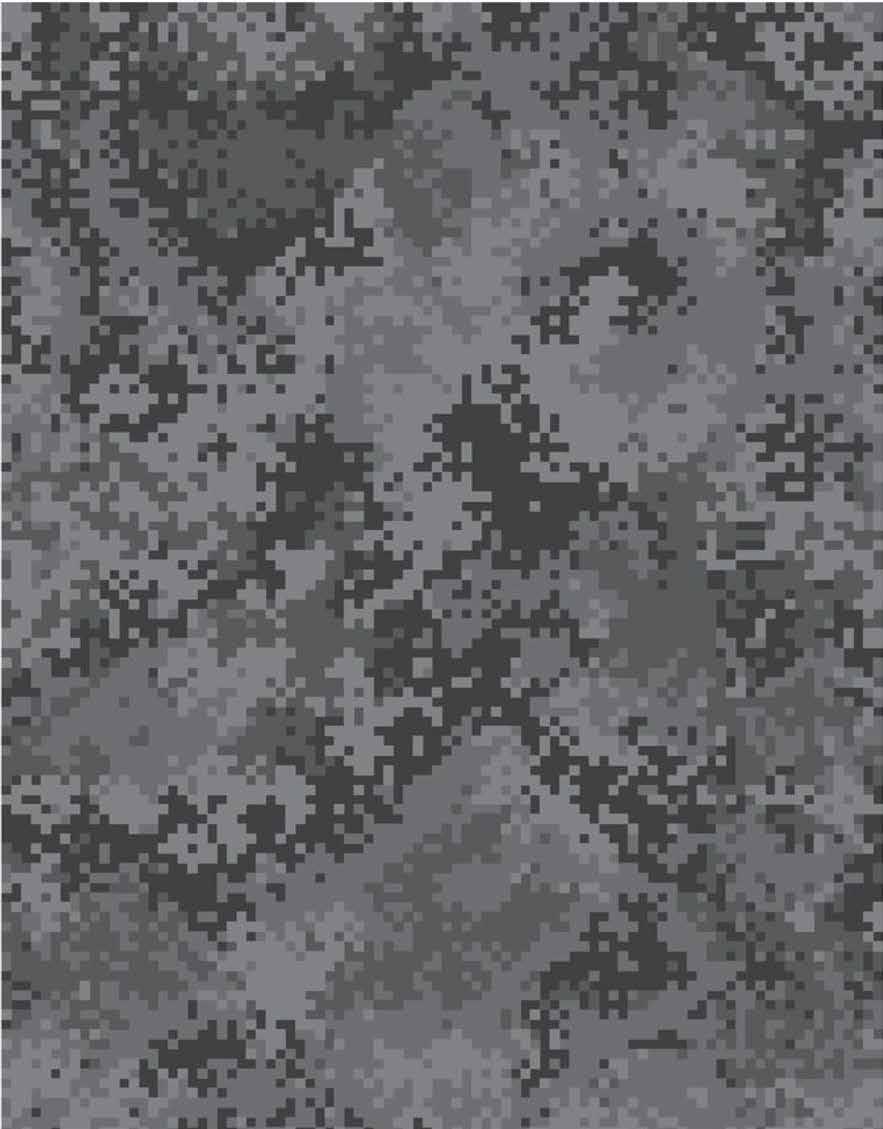
Any day with a fly rod in hand is a good day. But what if you could float waters few boats have access to? Wade streams few anglers have stepped in? Present flies to unsuspecting fish? Picture it.
Purpose-built for adventure anglers, Slipstream Rafts feature a streamlined design to eliminate catch points and high-pressure drop-stitch floors with EVA foam decking for stable footing whether you’re sighting, casting or netting a fish. The sleek fishing frame has an internally routed anchor system and optional rod-holder tubes, enhancing your on-the-water experience. Available in three sizes to suit your adventure needs, in a Slipstream raft you don’t have to picture it, you can fish it.
 Scan
Scan
After many years as a BHA member, I have finally – finally – discovered a skill I think might prove useful to the outdoors-loving membership.
A skill for the outdoors.
Me.
The one who doesn’t go outside. I have a skill.
Here goes:
I can find indoor bathrooms anywhere.
Think about it. Isn’t the couch potato the best person for this particular skill? Do you trust the person bringing toilet paper to a tree stand to find a bathroom?
No. That person can turn anything into a bathroom. That’s a risky proposition, putting that person on the hunt for indoor plumbing. That person will tell you the Trainspotting bathroom is just fine.
And let me tell you something. The Trainspotting bathroom is never, ever just fine.
Your bathroom finder should be someone who thinks bathrooms and wild animals should be like Star Wars and Star Trek –the two should never meet.
Your bathroom finder should see an Instagram post of Land Tawney using a stick as a spoon and want to give him a stern lecture about parasites.
Like, with his middle name and everything.
Huh. What do you think Land Tawney’s middle name is? That should be a contest – guess Land Tawney’s middle name, win a membership.
Or extra camp spoons so you’re not eating off a stick.
Your bathroom finder should feel absolute panic when she watches her husband take a paddle board through lily pads because plants in the water are just next level ick.
That’s all me. Your bathroom finder.
Hi.
I mean, what are we even doing here, guys? Lily pads? Really? Do we need plants in the water? You know they go all the way to the bottom, right? Anything could be in there. Anything.
Except bathrooms.
You might know Muster in the Mountains 2021 was the first time I camped in a tent.
If you don’t know that, I’m thinking you’re probably not surprised.
Camping, for me, is like that one boyfriend I had – occasionally fun, mostly work, and a relief when the whole experience was in the
rearview mirror.
And one go-round with both camping and that boyfriend was enough.
Muster 2021 had so many portable toilets, each slug on my tent could have had its own.
Waking to slugs slithering on the outside of the tent is a part of camping I was unaware of and a complaint I will lodge later.
I would also like to complain about the snake I saw during the foraging hike. I was trying, guys. Really trying. I hiked. I learned how to safely forage. I’m not saying BHA should be my own personal St. Patrick, clearing the land of snakes.
I am saying being my own personal St. Patrick is a fantastic prize for guessing Land Tawney’s middle name.
Snakes are chief among the many reasons I avoid portable toilets. Seeing one on the foraging hike did nothing to assuage my concerns about using portable toilets – on repeat – at Muster 2021.
A good friend kindly offered the bathroom in his camper. But camper bathrooms and portable toilets are like dinosaurs and birds - a few rungs of the evolutionary ladder separate them.
We were all camped in a field at the base of a hill. Crowning that hill was a brew pub. It beckoned and gleamed like Camelot – an indoor space filled with camaraderie and beer.
And a bathroom, tucked into a corner.
Buoyed by my find, I agreed to Rendezvous 2022, held in a field filled with portable toilets.
And I knew I wouldn’t touch a single one.
Also, couldn’t touch a single one.
That those portable toilets sported cheeky sayings like, “No snakes in this one – we checked!” didn’t matter and maybe legitimized my snake-filled portable toilet fears.
I found a museum on the fairgrounds where Rendezvous 2022 was held, for which I’d just like to offer my thanks. If BHA persists in refusing my suggestion of a Rendezvous movie night, a Rendezvous museum is excellent compensation.
But movie night is a lost opportunity, guys. Rendezvous 2022 was on Friday the 13th. So, you know, show Friday the 13th. Rendezvous 2023 was on St. Patrick’s Day. Show Leprechaun.
Oh! BHA could have had the Land Tawney middle name contest so I had a personal St. Patrick to sweep away snakes on the actual St. Patrick’s Day! Then we all could have watched Leprechaun and felt so happy together.
Maybe next year.
Anyway, that museum had a bathroom.
Had it had a bar, I would have moved in.
So here we are. As I write this, Muster 2023 looms large on the calendar. I can’t be there, but I want you to know I’m here for you guys. Email me. Text me. Send me pictures of the site.
I’ll find you a bathroom.
Me. The BHA Bathroom Finder.
Ew. That name is worse than portable toilets. Sounds like we need another naming contest.
BHA life member Wendi Rank is an indoors enthusiast from Pennsylvania. She spends her free time patiently waiting for her husband to return from hunting. Her writing has been published in Nursing and the Journal of Neuroscience Nursing, and she’s a columnist for American Community Journals.



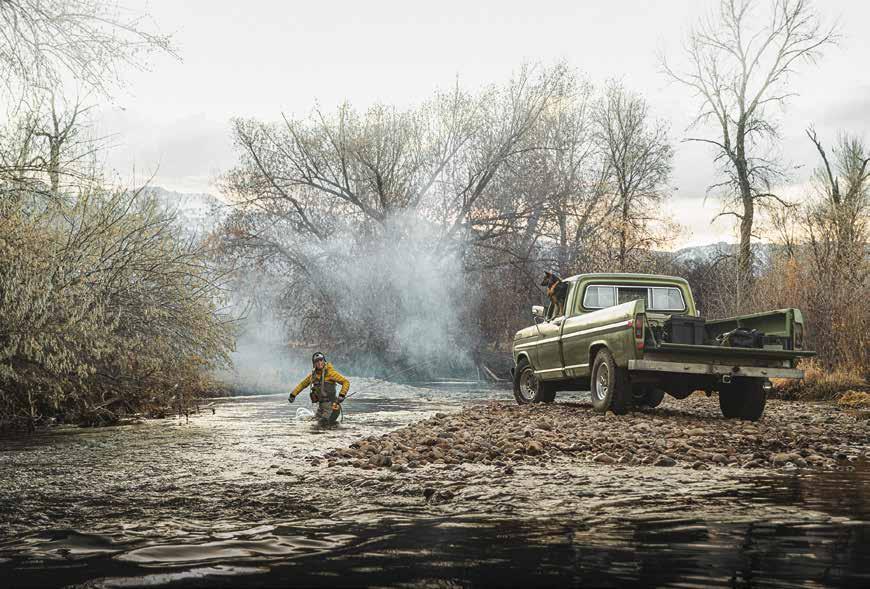


I was so broke by the end of that summer that I had to borrow a hundred bucks from my dad to fill my truck up to make it down to the sand. I bought some instant mashed potatoes and a few pounds of deli ham with the rest, figuring I could supplement my diet with fish. I had spent the summer of covid climbing mountains and fly fishing in alpine lakes in the West and had nearly forgotten how many fish our Louisiana marshes held. After a few weeks back home in Baton Rouge, I couldn’t take the urban heat or the lack of fish, so I headed down to Grand Isle and its semi-tropical breeze.
I relearned my way around the small barrier island after an absent adolescence. Crossing the Highway 1 toll bridge and smelling the salt was a relief following the three-hour drive from the city. The old Suburban lurched forward with the grace of a hippopotamus as I pulled into the Bridge Side Marina.
I walked up the stairs to the bait shop and proceeded to buy five dozen live shrimp, a pair of polarized sunglasses, a six pack of fruit punch Gatorade and a single hot dog wrapped in a tin foil coffin. Back comfortably in the cockpit of my Chevy, I cruised toward the state park and my evening’s sand-filled campsite. The park had an area for oversized pull-behind campers and RVs. The long walk to
my campsite made me feel better about paying 15 bucks to camp at a state park – as opposed to “roughing it” in my truck on BLM land in Utah or backpacking up James Peak in Colorado with fly rods strapped across my pack as I had become accustomed to doing all summer.
After pitching my tent and rolling out my fancy self-inflating sleeping pad, I ate a dry granola bar washed down with Gatorade. A few hours of remaining light left time to fish.
After grabbing my backpack, tacklebox, spinning rods and bucket of shrimp, I plodded my way over the littoral zone, past beach dunes, through prime swamp rabbit country and finally to a giant, dilapidated fishing pier.
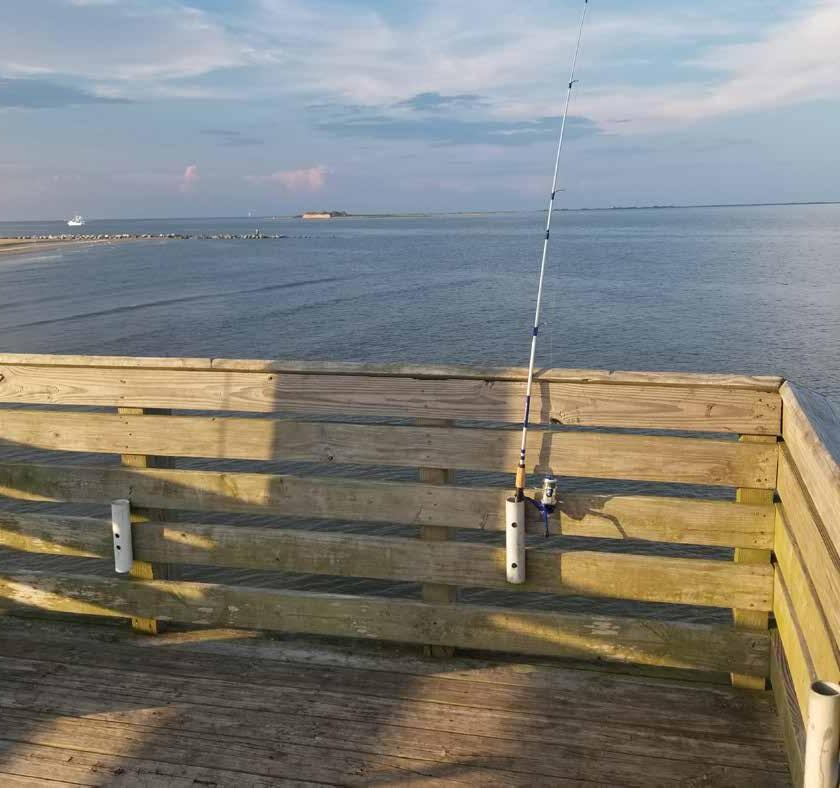
Usually fishing from a boat or wading in the surf were ideal methods on Grand Isle, but today I was feeling nostalgic. Fishing from piers and lawn chairs was a family tradition. My father didn’t care to fish, most of the time, but would gladly soak a nightcrawler in a farm pond with a cold beer or free-line a shrimp off a pier like my grandfather had taught him to do.
Crawling up the stairs and out onto the pier, I found the whole place empty, midweek, with rain in the forecast. The ocean in this part of the world was often brown, but today its surface shimmered of green and blue as the wind whipped toward Mexico. I rigged up a
popping cork to get the bait high in the water column and avoid the saltwater catfish and their sandal-piercing fins. The cork was only on the water about five seconds before it dove straight under the gentle surf. I reeled in the small speckled sea trout. A tad under the legal limit of twelve inches, back she went. The next shrimp didn’t bob in the breeze much longer. Another small one. I gazed out onto the ocean as the sky was turning purple, baiting shrimp after shrimp, catching small trout that must be thrown back. After about two hours, the live bait had run its course, diminishing my bucket to nothing but a perch.
All that was left in my miniscule tackle box was a package of swimbait lures, soaked in a congealed mass of rank-smelling fish attractant. The fish were on these as fast as they were the shrimp, much to my surprise.
I continued to reel them in, one after another, finally catching two 15-inch fish to keep – gutting them quickly to let them cool in the shade of the wood pilings framing the pier. Too tired to possibly eat now, I would fry them up in the morning in lard, and dredged in cornmeal, alongside tiny red potatoes.
The sky turned that brilliant pink-purple hue that no one should

ever attempt to name. As the light faded, I lost the ability to see the cork in the water and called it a day. A pod of porpoises rose to the surface playfully. The hum of shrimp boats began to pour out of familiar marinas and into the Gulf for the evening trawl.
Carrying my rods and bait bucket, now much lighter, down the long pier and onto the beach, I made my way back to the tent in the twilight, just as it started to sprinkle. Once the sun set, the horizon lit with the flicker of faraway oil rigs.
I didn’t keep count – and have been known to exaggerate – but I would guess I caught over 100 fish that evening. The sound of waves crashing just outside the screen door and rain pattering on the tent, I fell fast asleep without a worry in the world. Maybe I wouldn’t need the ham and potatoes after all.
Dalton Wayne is a culinary school dropout from south Louisiana and BHA’s Southeast chapter Armed Forces Initiative liaison. When not pursuing a creative writing degree at LSU, he can be found following his GSP through the swamp chasing woodcock, trapping raccoons or fishing in the diverse waters of his home state.

THE SOUND OF WAVES CRASHING JUST OUTSIDE THE SCREEN DOOR AND RAIN PATTERING ON THE TENT, I FELL FAST ASLEEP WITHOUT A WORRY IN THE WORLD. MAYBE I WOULDN’T NEED THE HAM AND POTATOES AFTER ALL.
COVERT GEAR BUILT TO HANDLE THE ROUGHEST APPROACH INTO BOW RANGE
Getting close to elk, mule deer, and other big game requires stealth. We designed the Intercept Hoody to provide the best sound, scent, and sight suppression to help you get into bow range. It’s built with an ultra-quiet merino wool blend that naturally resists odor to minimize smell and regulates temperature as you alternate between stop and go. And since your approach is likely to involve crawling over brush, rocks, and thorns, we reinforced our ArmorSpun merino wool with nylon and added removable elbow pads to make sure it has the rugged durability required for spot-and-stalk bowhunting.
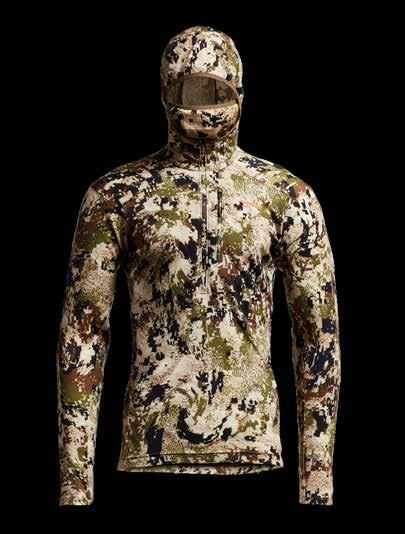
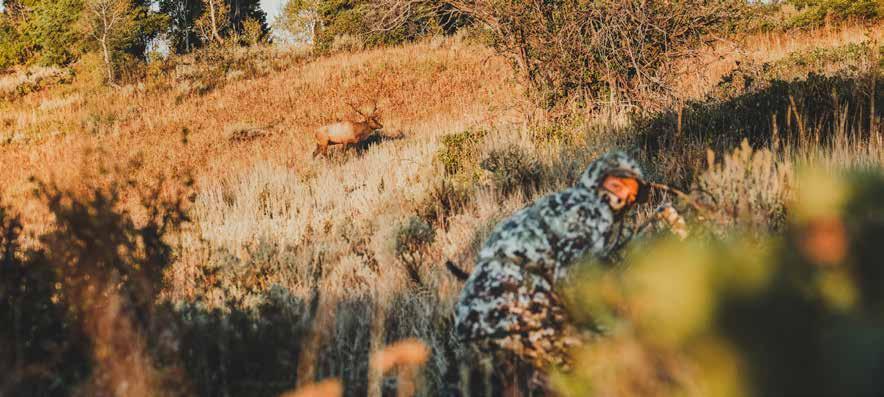
The river braids through the oaks and hickory trees, creating pockets of old sloughs and beaver ponds – a hardwood bottom haven for wood ducks, hooded mergansers, turkeys and whitetails. It’s also a rest area for southbound migrators, including mallards and black ducks. Mature pines tower over these hardwoods where the headwaters of three smaller streams converged into one river. If you know how to get to the right areas, and put in the time to learn the land and the wildlife, what awaits you is duck hunting magic.
John and I had been hunting this particular wildlife management area for three years before we first discovered the “Black Hole.” I am a comparatively seasoned waterfowler. I cut my teeth hunting dairy farms and grass seed fields in Oregon with my father and his friends – learning the waterfowling and hunting ethics from them while starting to blaze my own trail. But having moved to the Commonwealth for work, I was starting anew on public lands.
John was new to waterfowling when we started, but he learns fast. During the initial season, he shot his first duck on the WMA. The drake wood duck fell upon the third shot through the autumn leaves onto the bank of a flooded beaver slough. With it came the sense of accomplishment of a first duck, gratitude and the next step in his learning process – the sharing and preparation to enjoy with his family.

We walked primitive paths, finding pockets of ducky water here or there between older pine stands and those that had been cleared and replanted. When the Department of Wildlife Resources finished cutting two-track roads, installing gates and seasonal parking areas, once out of the way beaver ponds became more accessible. The areas we toiled to through ticks and sweat to discover in the off-season were now readily available. More people discovered once prime locations. We needed to either get there earlier or push deeper into the woods. Trying to arrive earlier than others did not work on the “hunt-wherever-you can” WMA, as someone would still inevitably try to set up where we were. Time to go to work again.
Observing the duck flight lines in the distance over the hardwoods, we believed there had to be more. So scouring Google Earth (in the days before onX) and trading notes during the work week, we planned to push further into the woods. On one slow morning hunt I scouted a path off the trail, making my way to the meandering river. Black ducks greeted me, sitting in an eddy on the river, just upstream of an old beaver dam. This was the place.
After debriefing with John and another good friend, Nick, we devised a plan. The following Saturday we set out early enough to blaze an “as the crow flies” path from the closest trail to the location on the river. Our planned route cut in half the distance I walked to discover it. All that lay between us and the black duck spot was a stand of young planted pines. How hard could it be?
Ten minutes later, vines and thorns snagged our neoprene waders and gloves, which kept our hands from getting torn open. Every gap between the young pines was choked with seven-foot-tall blackberry bushes. There wasn’t even a deer trail. We took turns; one guy using the decoy bag to push down what felt like an impenetrable wall of vines, another tracking the map on his phone for a bearing, while the third caught his breath and prepared to re-enter the fray.
Sweat steaming through our base layers, we made it to the hardwood bottoms and the park-like understory with a few minutes to spare. Throwing a few decoy blocks in the river, we took shelter beneath holly trees, hiding behind tall, bankside grass. Our reward was wood ducks coming in from above the treetops, zipping along the water’s surface. A pair of black ducks descended from a light blue sky, falling to the thunder of shotguns echoing through the oaks. Once the flights slowed for the day and we recovered the floating birds drifting in the current, we happily walked the long way around to the parking area.
With the black ducks that seemed to love the area and the way wood ducks flew along the water at first light, silhouetted in black against the trees beyond, the name “Black Hole” seemed fitting. Over the years, Black Hole lived up to its moniker. Floods and storms have changed the hydrodynamics now, and the birds don’t interact quite the same as they once had, so we’ve continued to explore and find new areas within the WMA.
Change is constant, but the opening-day mornings, wood ducks squealing through the trees, banded black ducks, two puppy’s first retrieves and many more memories stay fresh in our minds. The lessons learned discovering Black Hole have drawn us further into the woods and marshes of our public lands – in search of new hidden gems and new memories with great friends.
BHA member Shawn Swearingen, a native Oregonian, moved to the D.C. area after college. Through writing about the outdoors and woodworking, he copes with living in the suburbs with his wife and two sons while sharing his love and experiences afield with them.



ARMED FORCES INITIATIVE
Operation Phoenix Outdoors
ALASKA
Alaska Rod Company
FishHound Expeditions

Forbidden Peak Brewery
On the Fly Sportsman’s Photography
PacBak
Screaming Eagle Archery
CALIFORNIA
Lobo Products Inc.
COLLEGIATE PROGRAM
Agate Lake Resort
Modern Carnivore
North Carolina Natural Resources Commission
Opportunity Outdoors
COLORADO
Bar-U-Eat
Budges Lodge
Burris Optics
Chopwood Mercantile
Cimarron Wealth Management
Gunnison Country Outfitters
Gunnison River Fly Shop
Harmel’s on the Taylor
Hilleberg
Hunters of Color
Hyperlite
I Bar Ranch
Kate’s Real Food
Kryptek
Laggis Design & Construction
Mayfly Project (Abel, Airflo, Ross Reels
Meyvn Creative
NikWax
onX
Savage Arms
SAW Construction
Seek Outside
Sign Guys and Gals
Uncharted Outdoorswomen
Upslope
Ursack
Wright Angle Construction
IDAHO
Anglers Fly Shop
Chisel Custom Decor
Guidesource Outdoors
WorldCast Anglers
ILLINOIS
Hardcore Hammers
INDIANA
Flint Ridge Rifles
Howe and Brown Hospitality
The Smoking Goose
Two Forks Guide Service
West Boggs Park
KENTUCKY
Lewis and Grant Auctions
MICHIGAN
Flint Ridge Rifles
MINNESOTA
Hjelle-Arc Spears
Next Innovations
Timberline Sports
MISSOURI
ALPS OutdoorZ
MONTANA
Adipose Boatworks
Alpine Physical Therapy
Blackfoot River Outfitters
Cambie Taphouse + Coffee
CD Fishing USA
Edward Jones Financial Advisor Lucca Scariano
Gastro
I’m standing in the dark, up to my waist in icy pond water, holding a shotgun and wondering why I thought duck hunting in South Dakota was a good idea. It is 30 minutes before sunrise at the U.S. Fish and Wildlife Service’s Giedd Waterfowl Production Area in the Prairie Pothole Region of the Great Plains. My husband Bill and our friend Jim stand thigh deep and crouched behind cattails and bulrushes. I’m on tippy toes, trying to keep my shotgun out of the water and see over the plants.
We wait. The light grows until I can see the ice crystals blossoming on my gun, my clothes and the plants around me. The sun cracks the horizon and sets the glassy water and cloudless sky on fire. Groups of green-winged teal, gadwall, shovelers and a few pintail wing past us, just out of range, to land in a growing raft at the far end of the pond. We persist, willfully optimistic, but end the morning without a single duck.
I couldn’t care less.
I’m ridiculously happy. Although my fingers are numb with cold, I haven’t felt my toes for the last 30 minutes, and I’d kill for a cup of coffee, I’m a birdwatcher and duck hunter in the heart of a vast network of potholes, ponds, lakes and wetlands filled with wild birds.
A few squares of native or restored prairie snug up to soybean and wheat fields. Diamonds and triangles of Conservation Reserve Program lands bracket pivot irrigation circles and outline potholes and streams. Ducks and geese are everywhere.
To be clear, it isn’t wilderness. Yet this land, a mix of public and private ownership and an amalgamation of agriculture, ranching, wetlands and prairie, is our present and, if we are fortunate, our future.
In Texas we pay for the privilege of hunting on private land. Along the Gulf Coast, on land that was once tallgrass prairie, farmers intensely manage land for rice and waterfowl. While the target is ducks, shorebirds, wading birds, migratory birds and all manner of creatures benefit from the creation of surrogate wetlands. I’ve sat
in a blind on the shore of a managed wetland and watched otters gamboling as great egrets prowled the shoreline. Pintails, greenwinged teal, shovelers and gadwall rocket past us, tempting fate. In Texas less than 5% of the state’s vast acreage is state and federal land. Of that public land, only a tiny percentage is open to the average hunter. Yet even as I pay for the privilege of hunting on private rice fields, I know that without that checkerboard of public and private lands in the Prairie Pothole Region I would have no reason to be here, either as a birdwatcher or a duck hunter.
Over 90% of waterfowl in the U.S. nest on private property, according to Ducks Unlimited research. More than 150 species of sparrows, swallows, nighthawks, raptors, woodpeckers, wrens, grouse, flycatchers, warblers and game birds nest in the prairies and wetlands along the former expanses of the Great Plains. One-third of the continental population of American white pelicans nests in the PPR, along with a number of gulls, grebes, bitterns, soras and terns. At least 13 species of shorebirds breed here, including the threatened piping plover, American avocet, upland sandpiper, marbled godwits, long-billed curlew and Wilson’s phalarope. Migrating birds, including endangered whooping cranes, rely upon these lands for food, water and stopover sites on their journeys.
Grasslands in the Great Plains have been steadily plowed under since the European settlers first started arriving en masse in the 1800s. Every year, millions of acres of native prairies are converted to cropland. In just 10 years, spanning 2009 to 2019, over 98 million acres were plowed under.
More than 80,000 acres of wetlands are lost nationwide every year, with 16.8 million acres drained since the 1950s and more than 2 million acres since just 1986. In regions of the PPR, at least 50%, and possibly up to 90%, of the potholes are gone or seriously degraded.
We are in trouble. No matter how many Duck Stamps are sold, the federal government cannot possibly buy up all the habitat required for healthy migratory bird populations – not even in a landscape as important as the PPR. Nor can Ducks Unlimited, regardless of how astonishingly robust their member support has proved to be,
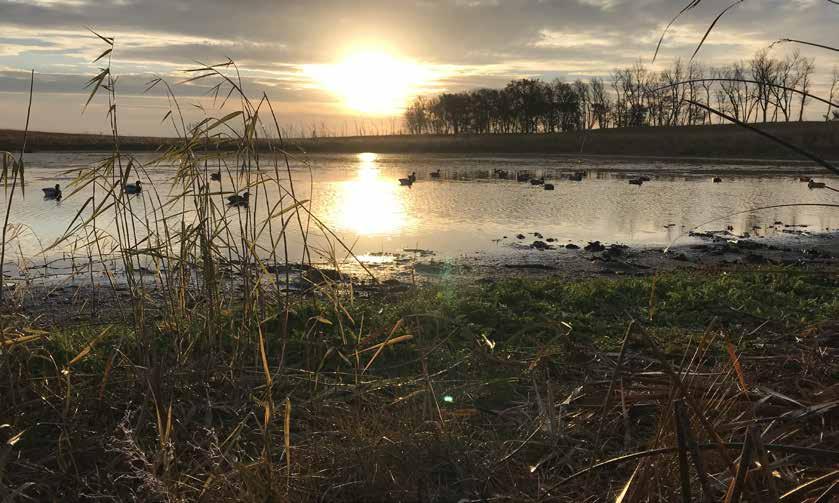
purchase the large, contiguous tracts needed. No single entity, not Audubon, the Nature Conservancy, or any other nonprofit, has the resources to purchase and manage habitat on such a scale.
The vital lands we need for both conservation and agriculture are held in private hands. In the PPR and all along the Great Plains, the men and women who hold our conservation future are farmers and ranchers.
The single largest source of funding for conservation on private lands is the Farm Bill. The U.S. Department of Agriculture has hundreds of millions of dollars available to private landowners to keep wetlands, grasslands and other fragile lands protected. Every year that the programs are funded, millions of acres of wildlife habitat are improved. No, this isn’t preservation of pristine wilderness, but conservation comes in all shapes and sizes. We must figure out a way to work with our private landowners – and the USDA programs – to preserve and create essential habitat.
Early in the 20th century, collaboration between hunters, conservationists, birdwatchers and naturalists resulted in the laws that are the foundation of conservation in the U.S. The Lacey Act, the Migratory Bird Treaty Act, the Wildlife Restoration Fund (Pittman-Robertson) and the Duck Stamp Act created the funding

and framework for our current network of wildlife restoration and public lands. But it is no longer enough. It is time that birdwatchers, hunters, naturalists, farmers, ranchers and other private landowners recognize what we have in common and work together to preserve these essential habitats.
While some supporters of BHA, especially those used to the vast tracts of wild public land in the western U.S., might look askance at the idea of joining forces with the USDA, ranchers, farmers and other private landowners, it is time to put aside our differences and work together.
BHA member Margie Crisp is a writer, artist, birdwatcher and bird hunter who lives in the Post Oak woods of central Texas. She is the author of “Duck Walk: A Birder’s Improbable Path to Hunting as Conservation” (Texas A&M University Press, 2023).
CULTIVATING A UNIQUE SENSE OF CONNECTION TO THE ENVIRONMENT AND A DEEP APPRECIATION FOR THE FOOD WE HARVEST.


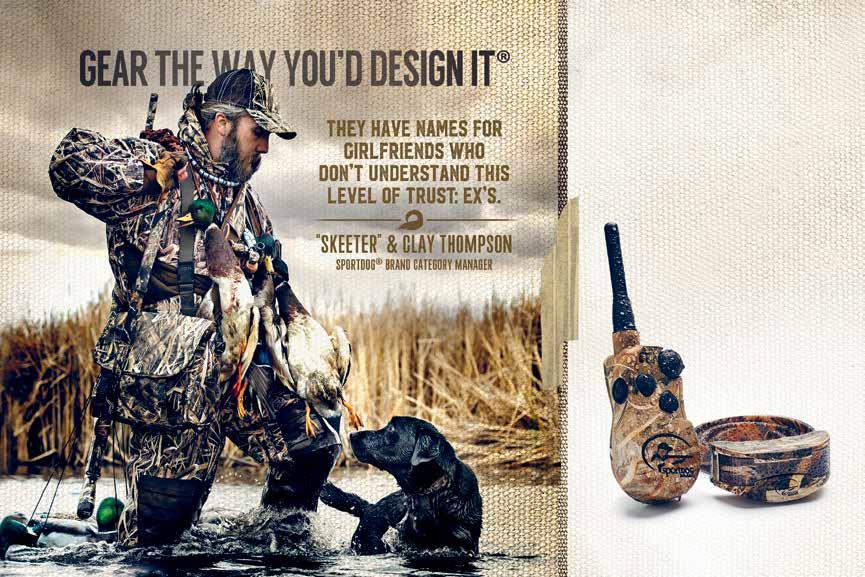

SEASON 12
SCAN THE QR CODE AND BE THE FIRST TO KNOW WHEN THE SEASON IS LIVE.

THEMEATEATER.COM

Comic: BHA member JJ Laberge is the creator of Clade & Genus, an online comic that focuses on the business of nature. His inspiration comes from spending time in the outdoors within Northern Ontario’s vast public lands pursuing whitetail deer, moose, ruffed grouse and woodcock. You can find Clade & Genus on Instagram @cladeandgenus or online at www.cladeandgenus.com


You can choose to make one donation at a time or become a sustaining donor and make monthly donations. All donations are fully tax-deductible and go toward securing the future of hunting and angling – ensuring that you have access to public lands and waters and healthy fish and wildlife habitat when you get there.
Our shared lands, our responsibility. We are working to diversify our funding sources to ensure that BHA will always be working on behalf of our wild public lands, waters and wildlife – for generations to come – by establishing a $1 million endowment. This investment will grow and become a perpetual funding stream that exists to support the future needs of our organization, regardless of any unpredictable challenges beyond our influence. Give today to form the root structure that will sustain BHA for many years to come.
Including Backcountry Hunters & Anglers in your plans for the future will create a long-lasting impact for our wild public lands, waters and wildlife. Your commitment to BHA will allow the next generation of conservation leaders to continue our work as part of your legacy. Including BHA in your will, trust, retirement account or life insurance policy is one of the easiest and quickest ways to support the future.
Support BHA every time you search online by using search engine Bing’s Give Mode.

Put your vehicle towards public lands and waters through Vehicles for Charity.

Please contact admin@backcountryhunters.org or visit backcountryhunters.org/donate for more ways to support BHA.

Live long enough, and you will likely encounter a time where you did not live up to your own standards. Recently, as I was looking forward to this coming hunting season, I realized that I was simply looking forward to spending time with my adult son whom I have been unable to hunt with for a number of years. As I thought about it more, I realized that I was actively trying to prevent myself from worrying about the likelihood of harvest, or what size animal we would try for or any of the more typical measures that I had previously applied when thinking of a “successful hunt.” What had changed?
As I reflected on my shifting priorities, I came to realize that part of it was due to some disappointing results from my hunts the past few years. If you were to ask me what my number one priority is when hunting, my response would always be a “a quick clean kill that minimizes the suffering of the animal.” I have passed up long or otherwise questionable shots many times in deference to this priority, but over the past few years I have done things that demonstrate that I had allowed other priorities to creep in and undermine my commitment to first principles.
In 2021 I was able to go on a bucket-list hunt to Kodiak Alaska to pursue mountain goats, due to the good fortune of having a relative move to that state temporarily for a few years. The realization of the uniqueness of this opportunity, and the costs involved, placed additional and unwanted pressures on the situation; knowing I might not have this opportunity again, I badly wanted to get a goat. I recognized this feeling from similar circumstances in my past that were brought on by finally drawing a long awaited elk tag. After 15 years of waiting to draw that tag, I realized that I wouldn’t have it in me to do this type of hunt 15 years in the future. This was going to be my one and only chance to hunt this unit, and the pressure of that knowledge created an anxiety during the hunt that negatively impacted my enjoyment of the hunt.

And so, in the high, rocky crags of Kodiak island, I took a long shot in a strong cross wind and gut shot my goat. In normal circumstances, I would have worked to get closer. I would have waited for another day, and another opportunity. But I was beset by other concerns – what if our weather window closed? What if the goats moved to a more distant peak beyond our reach? If we harvested sooner, could we also hunt blacktails and add another species to my bucket list? I was fortunate to find the goat again and deliver a finishing shot, but in that I was perhaps more lucky than good. The fact that I took that shot bothered me.
A year later found me in Wyoming with two of my sons, looking
for their first antelope. For the younger of the two, it would be his first big game hunt, and so I was strongly motivated to make it a good experience. Unfortunately, the conditions we faced seemed to make that task almost impossible. We were hunting a ranch managed by Fish & Game to provide access to the public, but we were assigned the final week of the season after the area had been heavily pressured for four weeks. The terrain was as flat and featureless as I had ever encountered, with no cover taller than our boot tops. We had a heck of a time finding antelope still on the property, and a worse time getting in range. In my mind, to compete with all the other distractions a young teenager faces in this world, I had convinced myself that if he was going to like hunting – we had to be successful. And I reduced that to the simple measure of whether or not he killed his first big game animal. And so, with these pressures bearing down on him, I had him take a shot beyond what I knew to be wise, and he wounded the antelope. This set in motion a sequence of events over the next hour that resulted in more shots fired, more bad hits, and needless suffering of the animal. We did bring that buck home, but it was an ugly kill, and writing about it now still brings a pit to my stomach. I had let my self-imposed pressures lead to bad decisions.
Aldo Leopold famously said that “a peculiar virtue in wildlife ethics is that the hunter ordinarily has no gallery to applaud or disapprove of his conduct. Whatever his acts, they are dictated by his own conscience, rather than a mob of onlookers. It is difficult to exaggerate the importance of this fact.” This is something that we all should think about before we head afield. What limits will we self-impose on ourselves to ensure an outcome that we can be proud of? An outcome that does not denigrate the animal we are pursuing? In the heat of the moment our thinking on these elements will be clouded by our competing desires and the mix of adrenaline and anxiety known as “buck fever.” So we should make these decisions before we head afield, when our thinking is clearer.
It is often said that once you send the bullet on its way you can’t call it back, and we must live with the consequences of what we have set in motion. There have been many times when I have passed up questionable shots. And there have been times when I have taken those questionable shots. It is not the ones I have passed on that I have regretted.
BHA member Harley McAllister is a board member for Orion, a longtime outdoorsman and a devoted father. He and his wife Abby have written a series of guidebooks for families planning vacations to the national parks called “Adventuring with Kids.”
There are dishes that I create for others, and there are those that I cook for myself. This one, I’ve been thinking of since reading Julia Child’s My Life in France. It’s not really an “accessible” dish – more time consuming than the average home cook might want to invest, but it was challenging, fun and kept me on my toes. You’ll learn how to process fresh chestnuts, utilize double boiling to keep food warm, make gravy and finally roast a thicker cut of meat to medium-rare. With Mastering the Art of French Cooking Vol. 1 as companion, I cobbled together something that was inspired by the following passage in Julia’s memoirs:
“Autumn was hunting season, ‘la chasse,’ a serious passion in France, and suddenly wild game of every pelt and feather appeared in the marketplaces. Wild hares and rabbits hung whole; haunches of elk, wild boar and venison were presented with hoof and fur intact. The shoppers insisted on this, Bugnard explained, for how would you know what you were buying if the game was all skinned and wrapped up?
I was eager to try these delicacies and was thrilled when Bugnard instructed me on where to buy a proper haunch of venison and how to prepare it. I picked a good-looking piece … and hung the lot for several days in a big bag out the kitchen window. When I judged it ready, by smell, I roasted it for a good long while. The venison made a splendid dinner, with a rich, deep, gamy-tasting sauce, and for days afterward Paul and I feasted on its very special cold meat.”
This is not a difficult dish, but there are several moving parts to it. You’ll have to do some juggling to make sure all the elements come together at the same time in the end. As Julia would say, “Bon appétit!”
Ingredients
• 1 pound of venison round or loin
• Kosher salt, to taste
• Freshly cracked pepper, to taste
• 2 tsp of olive oil
• Pat of butter
• Roasted vegetables to serve on the side
Chestnut Purée
• 2 heaping cups of whole, raw chestnuts*
• 1 rib of celery, cut into large sections
• 2 sprigs of fresh parsley
• 1 bay leaf
• 2 sprigs of fresh thyme
• About 2 quarts of unsalted or low-sodium brown stock (game or beef)
• 4 tbsp of softened butter
• 2 tbsp of heavy cream
Port Sauce
• 1 shallot, minced
• 4 tbsp of cold butter, separated
• 1 tbsp of flour
• 1/2 cup of port wine
• About 3/4 to 1 cup of leftover brown stock from drained chestnuts

• 1/2 cup of drained Oregon Specialty Fruit Pitted Red Tart Cherries, optional
*If you have access to canned, peeled chestnuts, skip step 2, which will save a lot of time.
Special equipment: food processor
1. Three hours prior to cooking, take venison out of the refrigerator and allow it to sit at room temperature. Salt the meat 1 hour prior to cooking.
2. To make the chestnut purée: If using unpeeled, raw chestnuts, cut an “X” into the shell of each nut with a serrated knife. Be careful not to cut yourself. Boil nuts for 10 minutes. Next, peel off the hard shell and paper-like husk while chestnuts are hot, keeping the unpeeled nuts in the hot water while you work; use a kitchen towel to protect your hands. Reheat the water as needed – the husk is difficult to remove when cool.
3. Next, transfer peeled nuts to a saucepan with celery, parsley sprigs, bay leaf and thyme and submerge with stock, making sure chestnuts are submerged by 1.5 inches. Bring to a simmer and gently cook for about 30 minutes, uncovered. Discard herbs and transfer chestnuts to a food processor with a slotted spoon, reserving the stock. Purée chestnuts with heavy cream and enough reserved cooking liquid to form a smooth paste. Transfer chestnut purée to a small heat-proof bowl. Then spread softened butter over the top of the chestnut purée to seal it; the butter will keep the purée from drying out while you cook the meat. Set aside.
4. To cook the venison: Preheat oven to 300°. Right before cooking the venison, pat meat completely dry with paper towels and season with more salt. Heat a non-reactive skillet to medium-high heat and add oil and butter. When the fat starts shimmering and slightly smoking, add the meat and sear on all sides for a nice crust – about 2 minutes on each side. Transfer venison to a baking dish or tray.
5. Season the seared venison with cracked pepper and finish the roast in a 300° oven for about 10-15 minutes, or until the internal temperature reaches 127° – use a probe thermometer for accuracy. My particular cut of meat required 12 minutes. (Do not use the same pan where you seared the venison; it is screaming hot and will make the meat cook unevenly in the oven.)
6. While the venison is in the oven, reheat and finish the chestnut purée by creating a double boiler. Bring a small saucepan that is filled halfway with water to a boil. Set the bowl with the chestnut purée on top, and whip in the butter as the purée warms. Season to taste and keep warm by adjusting the temperature as needed, stirring occasionally. If the purée seems too thick or dry, add stock and/or more cream.
7. When venison reaches 127°, remove it from the oven and loosely tent with foil to rest to a finishing temperature of about 135°.
8. To make the port sauce: Reheat 3/4 cup of reserved stock. In the pan where the venison was seared, melt 2 tablespoons of butter over medium heat. Whisk in flour and cook for 2 min-
utes, stirring constantly. Then gradually stir in port, allowing the wine to get incorporated with the flour in between pours. Add cherries (optional) and allow to thicken. Scrape the bottom of the pan to release browned bits (called fond). Then gradually whisk in the hot stock. Simmer until thickened, stirring frequently. Take off heat. Stir in 2 tablespoons of cold butter. Season to taste with salt and pepper and add more stock as desired.
9. Slice meat against the grain. Serve with warm chestnut purée, port sauce and roasted vegetables on the side. This recipe makes a little bit more chestnut purée than is needed for two people – it is quite rich.
BHA member Jenny Nguyen-Wheatley is a hunter, writer and editor in Omaha, Nebraska. In addition to her role as full-time associate editor at Nebraskaland Magazine, she runs the wild game cooking blog Food for Hunters and is a regular contributor to BHA’s Field to Table blog.

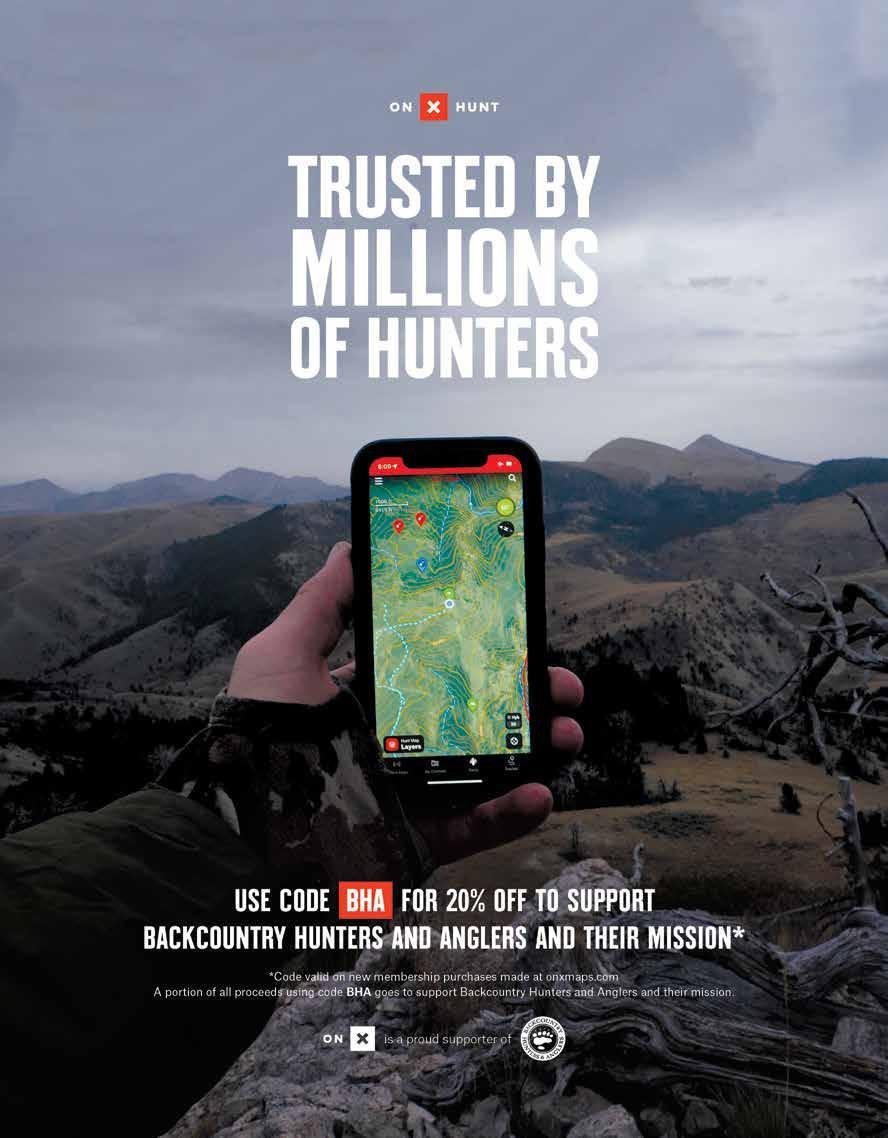
Any semblance of a trail had been lost several hours ago. I’d hoped it would carry me farther, but blowdown from the intense 2017 burn started only a few miles in. Then the trail became overgrown with new growth as the blowdown worsened the further up the valley I ventured.
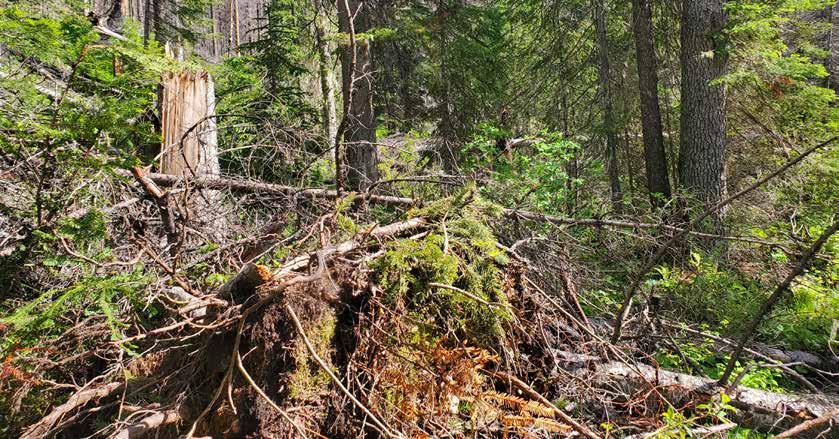
Every five or 10 paces I had to climb over a waist-high log. Or armycrawl under. Or tightrope walk snags turned slick from the light drizzle. When I’d hit a particularly big tangle, I’d circumnavigate the maze only to lose the faint thread of a trail – what used to be a trail – completely, and things would get even worse.
I was determined to keep going because I had somewhat expected this. Michael Easter introduced me to the concept of a “misogi” in his book The Comfort Crisis. A misogi being an annual, really difficult challenge – one in which success is far from guaranteed – that you voluntarily do to strengthen your resolve and build confidence. I’d been thinking about this “trail” ever since reading the book 18 months ago. Last year I couldn’t find the time, but this year I was determined to try. Twenty-some miles of disintegrating path, one big mountain pass, rain, snow, wind – and blowdown, of course – lay in my way.
The truth is that after only an hour or so of the worst jungle I’d ever experienced, soaking wet, slipping and sliding and narrowly avoiding catastrophic bone breaks, I was pretty ready to give up. But I found myself in one of those places where redoing what you’ve already done sounds worse than the unknown that lies ahead. So I kept going. And the next time I’d consider turning back, it’d sound doubly as bad as the mystery ahead. At some point I found myself pleased that I was at least honoring the misogi concept – doing something so hard it tested every ounce of my resolve – and a slight grin emerged from beneath the despair.
About that time I hit a short section free of blowdowns and undergrowth, and the muddy depression of the old trail was faintly visible. It was there I first noticed the tracks: two elk had recently headed up the same valley. Maybe it shouldn’t have surprised me to see those tracks, but it did. The trail had been so nonexistent and awful for so long, and the elk population in the area was so slim; I couldn’t help but wonder why any elk would want to travel through that fortress of fallen conifers.
Hours would tick by as I sometimes literally crawled up the trail. I’d check my progress on onX occasionally and feel disheartened that I’d only covered a half mile in an hour. Thoughts of how no one would find my body if I broke a leg entered my mind.
Then I’d hit a bare patch of earth and find the same two elk tracks.
The pattern continued all afternoon and into the evening: miles of blowdown and zero sign of a path, then a break and re-finding of a short section of the old trail pitted with elk tracks, reassuring me that at least two other creatures thought what lay ahead was worth the struggle.
Eventually our paths had to diverge. I turned upslope toward a short gap between high cliffs and crags, trusting a pass would exist and allow my escape, leaving the unseen but comforting presence of the elk behind. Seven-thirty p.m. found me crawling up vertical pitch on my hands and knees, sliding off slick logs and coming to terms with the likelihood I’d be spending the night curled up, trying not to roll off on the vertical mountainside.
Then, at 8 p.m., I found salvation. I crested another blowdown and noticed a log that’d been cut, and there it was: the trail had been maintained to this point from the other side of the pass. The ontrail slog steeply uphill on trembling legs was an improvement over where I’d been. At the top, after sliding across remnant snowfields, barren of tracks, I gained a view of the upper reaches of the valley I’d left behind: lush green meadows and cascading waterfalls – the kind of place any of us, and clearly the elk, would dream of spending the summer. How did those elk know the juice was worth the squeeze? Was it passed on by generations before them – before the burn and the blowdown? Or was it just instinct pulling them?
As I descended from the pass to the lake below and fell asleep under my tarp next to last year’s snow, I thought about what I’d done that day and the good sleep that would inevitably follow such a grind. And then I thought about how for the elk it was just everyday life.
-Zack Williams, editor
